
Hamline University Hamline University
DigitalCommons@Hamline DigitalCommons@Hamline
School of Education and Leadership Student
Capstone Projects
School of Education and Leadership
Fall 2019
Promoting Student Metacognition to Aid the Writing Process Promoting Student Metacognition to Aid the Writing Process
Jessica Kramar
Follow this and additional works at: https://digitalcommons.hamline.edu/hse_cp
Part of the Education Commons
Recommended Citation Recommended Citation
Kramar, Jessica, "Promoting Student Metacognition to Aid the Writing Process" (2019).
School of
Education and Leadership Student Capstone Projects
. 390.
https://digitalcommons.hamline.edu/hse_cp/390
This Capstone Project is brought to you for free and open access by the School of Education and Leadership at
DigitalCommons@Hamline. It has been accepted for inclusion in School of Education and Leadership Student
Capstone Projects by an authorized administrator of DigitalCommons@Hamline. For more information, please
contact [email protected].

PROMOTING STUDENT METACOGNITION TO AID THE WRITING PROCESS
by
Jessica A. Kramar
A Capstone project submitted in partial fulfillment of the
requirements for the degree of Master of Arts in Education
Hamline University
Saint Paul, Minnesota
November 2019
Capstone Project Facilitator(s): Kelly Killorn
Content Expert: Shelley Orr
Peer Reviewer: Tessa Ikola

ABSTRACT
Writing is a process that occurs over multiple steps; this may seem both excruciating and tedious
to students. By encouraging metacognition throughout the process, teachers can create more
autonomous learners. This capstone uses reflective strategies that address the question How can
educators use independent and group reflection processes to help students assess their
understanding and mastery of writing state standards?
Research concludes that guided
interaction with feedback increases student accountability and understanding of effective writing.
Through a series of reflective strategies, modeling, and both critical and positive feedback,
teachers can shift the way students think about their own writing, benefiting both the classroom
culture and the mastery of writing assignments. A literature review implied that both the writing
process and metacognition are transferable critical thinking skills across content areas and
assignments that increase both student success and confidence. Because of this, a research unit
was designed to incorporate lessons to provide students with independent and discussion based
metacognitive strategies. Students were given examples of reflective practices to guide them.
Lessons also included opportunities for different types of reflective activities. Although it does
take additional time to include metacognition in the classroom, strategies should take place
frequently and purposefully to establish a culture of interactive reflection.

TABLE OF CONTENTS
CHAPTER ONE 5
Introduction 5
Professional Context 5
The Importance of Metacognition 7
How Metacognition Impacts Teacher Planning 8
Conclusion 9
CHAPTER TWO 11
Literature Review 11
Reflecting on the Writing Process 11
Foundations of Constructivist Theory 12
The Writing Process 14
Planning 16
Drafting 16
Revising and editing 17
Rewriting or trying a new approach. 18
What Teachers Contribute to Student Reflection 18
Feedback 20
Modeling 21
The student’s role during reflection 23

Individual Reflection 23
Participation in groups 25
Conclusion 27
CHAPTER THREE 28
Project Description 28
School Context and Rationale 29
Evidence of Learning 30
Writing Pedagogy 33
Benefits of Metacognition in Other Content Areas 34
Participants and Timelines 35
Conclusion 36
CHAPTER FOUR 36
Critical Reflection 36
Capstone Literature Review Highlights 37
Limitations of the Project 38
Project Successes 39
Application to the Profession 40
Conclusion 41
References 41

CHAPTER ONE
Introduction
American schools have always obsessed over new ways to support and best serve our
students. As a means to promote intrinsic motivation and increased student accountability,
educators are encouraged to provide students with choice
and voice
. By releasing some of the
responsibility from teachers to their students at an appropriate level of development, “[s]tudent
voice and youth engagement provide examples of motivating youth academically through
data-driven reform” (Yonezawa, 2009, p. 206). One such way to encourage student voice is to
promote student discussion through metacognitive activities in small groups.
My capstone question is specific to my course and schedule: How can educators use
independent and group reflection processes to help students assess their understanding and
mastery of writing state standards?
This question will help me guide the small groups I conduct
weekly. The goal for these groups is to help students reflect on their understanding of writing
standards, so we can promote self-assessment and capacities for growth in learning, provide
remediation or extension, and help clarify anything they think is vague. By modeling and
scaffolding metacognition strategies, eventually students will be able to generate conversation on
a more independent basis.
Professional Context
As a young teacher, the best compliments I received revolved around being liked. It was
great to hear that students enjoyed being in class, but eventually, those compliments were not
fulfilling. It was not until I started hearing a new compliment that I truly felt like an effective
teacher: being in my class made students strong writers. Now, this was a statement I would hear

on exit surveys or from the teachers who had my former students, but they were few and far
between. That was when I was inspired to look at the practices centered around the writing
process, how I provided feedback, and how to engage students in their learning. These beliefs are
one of the reasons I attended a professional development session that was based on reflection.
During a staff development day, I registered for a session called “Student Reflection as a
Tool for Learning.” In this session, I experienced a bit of cognitive dissonance that made me
want to explore the topic further. First, they explained that stopping to predict what will happen
next in a book is evidence of student reflection. There were a few confused faces in the room,
including my own. I always assumed reflection was a final step in the learning process. Their
statement made more sense when the presenters defined reflection as a purposeful pause in
learning in order to move forward. Reflection to me was always thinking about your thinking; I
still was not sure if I completely agreed with that definition based on my own views of reflection.
Further research was needed.
Another moment during the professional development session that inspired me to dig into
metacognition was the emphasis on the instructor’s implementation of reflection using feedback.
They walked through all of the pros and cons they noticed and how they adjusted their practices.
Because their implementation was based on Jane Pollock’s text Feedback: The Hinge That Joins
Teaching and Learning
, a lot of their lessons revolved around students providing feedback for
each other. Based on my experience with students, I personally wanted to explore teacher
feedback, not peer feedback, because my former students provided superficial compliments
during peer review. They would express comments like, “good job!” or “strong paragraph” that
did not provide guidance for each other. I wanted to discover how to coach students on how to

look at their own writing critically in order to have discussions about with their peers to see if
that was more effective in aiding the writing process.
The outcome of this capstone is to help students assess their understanding of the
Minnesota K-12 Academic Standards in English Language Arts, specifically in grades 9-10
writing as well as the Earned Honors Standards in the district where I work, in order to help
make adjustments to their learning or behaviors. Maybe their reflection leads them to coming
into my office hours. Maybe their self assessment helps them see that their topic sentences are
not claims, but summaries. They may even decide to visit our Writing Center with prepared
questions. Whatever their conclusion is, I want to help students improve their metacognition in
order to advance their writing. My teaching setting is contextualized in order to understand the
writing best practices that are present in the project.
The Importance of Metacognition
Reflection, metacognition, self assessment, and self evaluation are used interchangeably
throughout this project. Due to the abstract nature of reflection, researchers have taken multiple
routes to define it. In Benton’s 2013 research, they arrived at a holistic definition of reflection:
Metacognition encompasses a number of cognitive processes that could be called
thinking skills, study skills, or simply astute self-awareness and independent learning.
Metacognition cannot be relegated to a simple list of study or practice skills because it
requires a deeper level of thinking and a broader array of teaching and learning
activities... Educational researchers conclude that metacognition includes self-awareness,
self-evaluation, and self-regulation, leading to learners' increased control of their own
thought process (p. 53)

This cyclical process is intended to evaluate a student’s deep understanding of critical thinking
skills, and in this case it is the writing process. Research suggests that metacognition is
incredibly important for students for two main reasons: it creates a growth mindset and holds
students accountable for their learning (Nelson & Bishop, 2013, p. 19-21).
This topic is not only important to me, but is helpful for any educator because both
writing and reflection are cross curricular skills. In my school, our building goal for the
2018-2019 school year was anchored in ACT Writing scores. Math and science classes practiced
writing essays in their classes. This is essential in developing long-standing writing skills and
allowing writing in “other content areas enables students to make the connection between writing
well and providing well-written evidence of their understanding” (Merten, 2015, p. 18). One of
my goals for this project is to develop strategies and sentence stems that can be applied to any
subject or assignment.
How Metacognition Impacts Teacher Planning
I developed a personal interest in this subject matter when I realized the importance of
reflecting on my own teaching practices. It took a few years of teaching to realize that I did not
have all of the answers and best practices established after my undergraduate program and a year
or two of experience under my belt. Once I saw the power of metacognition and how it positively
impacted not only how I teach, but how my students performed, I knew that it was a skill I
wanted to encourage my students to practice.
Last year, I attempted to conduct small groups with minimal preparations and research. It
was unsuccessful for a couple of reasons. First of all, norms and behaviors were not established
enough. We are encouraged to use flexible spacing and meet outside of the classroom. When I

was not close enough to the large sliding doors that open my classroom to a meeting space, a
student was vaping in my classroom. It proved that I could not manage a classroom and conduct
discussions by physically separating the small groups from the rest of the class. I resolved to
begin this process by meeting in a corner of a classroom. Once trust is built and the norms are
solid, then I can consider moving small group discussions into the hallway or letting the Earned
Honors Standards in the district I work help students invest in their choice, but will naturally
organize students into groups that will have similar needs. If students have a more clear
discussion point, they might find more purpose in the activity.
The discussions also failed because they did not have a greater purpose. It focused too
much on how they felt about the class overall and not enough on the learning they were doing.
As my collaborative team becomes greater advocates for the revision process, I want to tie these
discussions into the requirements of our summative essay revisions. Nielsen discovered, “A key
motivation for the use of self-assessment practices in the writing classroom is to address the need
for students to develop strong habits of drafting and revision” (2014, p.7). Not only should
students value the opportunity to reflect, but they should also learn to value this writing process.
Conclusion
Reflection is a continuous process of self evaluation and application of new knowledge. It
is an essential part of learning that needs to have explicit instruction. I believe that my new, more
structured approach to individual and group reflection will yield better results. After reviewing
several articles, I have selected specific strategies for my small groups to perform. The general
process includes modeling reflection, practicing self evaluation, sharing student conclusions, and
creating a follow-up plan. It is intended to emphasize the importance of the writing process

which is a cycle of writing, feedback, reflection, and revision. Finally, I can apply the results of
our small group discussions to lesson plans to fit the needs of each class.
Chapter Two synthesizes current literature on metacognition, teacher feedback, small
group discussion, and the writing process. There is a focus on how teachers can instruct writing
and how to facilitate reflection throughout the writing process. Chapter Three describes the
project taking place in a tenth grade English classroom. Finally, my critical reflection is
presented in Chapter Four to complete my evaluation of how metacognition and small group
discussion aids the writing process and impacts my teaching practice.

CHAPTER TWO
Literature Review
Reflecting on the Writing Process
What do students do when teachers provide feedback on their writing? They look at the
raw score first and then sometimes they look at comments briefly, but quickly move on to the
next task. If teachers never instruct students on how to interact with feedback, specifically
through reflection strategies, students may never apply what they learn about the writing process.
Teachers should be “promoting and reinforcing key messages about reflection, combined with
opening up more opportunity for reflective learning talk within class sessions,” enabling students
“to share their learning and their reference points more authentically” (Nelson & Bishop, 2013,
p. 24). This begs the question: How can educators use independent and group reflection
processes to help students assess their understanding and mastery of writing state standards?
The literature mostly centers around how students internalize the writing process and teacher
feedback and its impact on their mindset. In this chapter, I will be discussing peer reviewed
research that defines metacognition and justifies its role within the classroom. This chapter
discusses the writing process as a constructivist approach to learning, current writing standards,
and the steps of the writing process. In regards to application, chapter two also outlines the
teacher's role in writing and metacognitive instruction, and the student's role in learning how to
write which includes self-assessment. To better understand self-assessment, it concludes by
discussing reflection and how students can do this individually and as part of a group.
By participating in a reflective process, students develop a growth mindset and the
continuous growth of effective writing. Part of this awareness is developed through the

discussion of their reflection. Nelson & Bishop acknowledged that some students have
preconceived notions of a reflective project as a means of highlighting their weakness as
students, but one goal of this research is to help students see reflection as a lifelong skill
transferable to not only their writing, but other content areas as well (2013, p. 21). Although it is
difficult to do so, confronting weaknesses actually encourages a growth mindset and forces
students to take the next step towards improvement. It also makes students assess whether the
writing process was completed successfully and what they can do next time if it was not. They
will not only focus on their weaknesses, but also evaluate what makes their writing effective.
Student accountability increases when sharing their reflections out loud. Nelson &
Bishop (2013) suggests think-pair-share pedagogical structure promotes metacognition. It
enables students to take a personal look at their own learning, then gradually discuss these
reflections with small groups, and finally the entire class (Nelson & Bishop, 2013, p. 21). One of
the goals of this project is to create a community of safe risk-taking and a comfortable place to
be vulnerable. The effects of the second step should not only benefit the student’s ability to
reflect, but Wenzel (2007) believed that peer and self reflection develops critical thinking skills
as well as student buy-in. Wenzel continues to argue that this creates a more respectful, confident
student learning community (p. 183). It will hopefully become an integral part of an educator’s
classroom culture, which directly connects to the use of small group discussions to improve
student’s understanding of the writing process and have organic conversations about writing.
Foundations of Constructivist Theory
Constructivism in the classroom dates back to Kant, Dewey, and Piaget, but it has only
grown in popularity since then. Dewey’s rejection of the traditional classroom revitalized

education and made it hands-on for students, including using their own personal reflections; this
new approach emphasized that “[m]ental activities are needed in learning in order for students to
process their learning experience to become knowledge. In other words, education is a process
of modification of personal experience” (Pardjono, 2016, p. 166). Under constructivism, students
were no longer passive participants. Memorization was no longer the core of education.
The goal of constructivist theory is for learning to become more personal to students as
the emphasis is switched to their prior knowledge and how educators can build upon it. Even
assessments began to evolve. Brooks and Brooks (1999) argued that this constructivist approach
evaluates what students can generate, demonstrate, and exhibit, and not just what they can
memorize (p. 16). That being said, students’ interaction with feedback and their own personal
reflections can allow them to build on their knowledge of the writing process, creating stronger,
more adaptive writers. Although the challenge of constructivism is understanding and assessing
someone else’s knowledge efficiently, it makes teachers evaluate their own practices for
effectiveness. Are teachers assessing memorization and the regurgitation of information? Or are
teachers encouraging students to reflect on their own understandings? It should be the
demonstration of knowledge. Jonassen, Davidson, Collins, Campbell, & Haag all conclude that
according to constructivists, making meaning is the main goal of the learning process, requiring
reflecting on what is known to students (Jonassen et al, 1995, p. 11). In order to truly prove this
understanding, teachers should emphasize the importance of the writing process and how it
builds student skills.
If constructivism is a meaning-making process, there needs to be a level of buy-in from
students. Because writing is a difficult skill that students tend to be intimidated by, educators

need to find ways to motivate students to continuously evaluate their writing abilities and how to
improve it. There are multiple factors that engage students in the writing process including “the
person's desire for success (or failure), the value of the task as a motivation, and the method used
toward success” (Liu, 2014, p. 1). Liu is arguing that this intrinsic motivation has a high
correlation to student success. If teachers can increase student goal setting and motivation,
students will make greater strides in their writing.
The Writing Process
The writing process is a multi-step approach to composing a complete and polished piece
of writing. There are multiple variations of the process, but most include at least four steps.
According to Keen (2017), writing composition includes “overlapping processes and
sub-processes used recursively, including prewriting, drafting, revising
and celebrating
[publishing]. The key principle is that as far as possible writing starts with, follows and may
contribute to the development of students’ own experiences and ideas” (Keen, 2017, p. 376).
Most states recognize the importance of using a writing process to support writing with increased
complexity. The Minnesota K-12 Academic Standards in English Language Arts states that
students must be able to follow a writing process in order to prove their college readiness. These
anchor skills are required to be taught starting in sixth grade and continue to be developed until
graduation (2010, p. 89). For the purpose of this capstone, standard 9.14.5.5 “Use a writing
process to develop and strengthen writing as needed by planning, drafting, revising, editing,
rewriting, or trying a new approach, focusing on addressing what is most significant for a
specific purpose and audience, and appropriate to the discipline” (2010, p. 89) is used. According

to Understanding by Design, planning begins with the objective of a lesson (Wiggins &
McTighe, 2011, p. 37).
Although this project focuses on building reflection as a skills, using this standard as a
clear goal provides a way for educators to measure the success of their students. Not only do
students to clearly understand what each step of the writing process is, but they will also be able
to follow the writing process effectively in order to create a polished and effective piece of
writing. The article “Turning the Standards Towards the Student—A Metacognitive Aspect”
suggested that students track their evidence of mastering the standard for the following benefits
for both students and teachers:
It gives student and instructor a chance to determine what has been covered well and
what needs to still be done. It can be constructivist in nature, but the gap analysis done
will become valuable to both the student and the instructor. The metacognitive reflections
on what has been done to allow the student to reflect on their understandings and allows
the instructor to determine whether what they believe was accomplished was indeed
accomplished (Marcoux, 2011, p. 68).
When teachers and students work as a team, they are able to fill in the learning gaps together and
see higher achievement.
Each step of the writing process is described below according to the definitions provided
by Purdue University’s Online Writing Lab. Purdue University is a long standing expert on all
formatting options, and is a credible resource for writing instruction and aid. In addition to the
description of the writing process, the importance of reflection during particular steps is also
crucial to meeting writing state standards. Nielson examined how their research supported self

assessment in their writing instruction: they believe the only way to reach expert status in the
writing process is to move past working memory and commit the process to long term memory
specifically through metacognition and learner autonomy (2014, p. 4). Therefore, not only is a
solid understanding of the writing process crucial to developing strong writers, but also
instructing metacognition within certain steps.
Planning. The first step of the writing process is known by many names: prewriting,
planning, brainstorming, outlining, and even think aloud. Purdue encourages students not to
“worry about whether or not [their ideas] are good or bad ideas. [Students] can brainstorm by
creating a list of ideas that [they] came up with, or drawing a map and diagram, or just writing
down whatever [they] can think of without thinking about grammar” (“Stages of the Writing
Process,” nd, para. 3).
Planning can come in many forms, but it is intended for students to
generate as many ideas as they can in order to have a starting point for their writing.
Drafting. A draft is the first time students begin to write their text in sentence and
paragraph form. It is usually unpolished and incomplete. Unfortunately, students tend to think
they are bad writers because they often turn in a draft without completing the writing process. A
draft is composed of paragraphs that create a beginning, middle, and end of a piece of writing. It
is also usually the first attempt at completing a writing task. Purdue University stated that the
goal of drafting is to produce “a clear direction in [a student’s] paper. When [students] are
required to submit a rough draft, it doesn't need to be perfect, but it does need to be complete.
That means, [they] shouldn't be missing any of the major parts of the paper” (“Stages of the
Writing Process”, nd, para. 4). Because the expectation is not perfection, drafting is often one of
the first forms for formative assessment for a particular paper.

Drafting allows students to receive feedback, and for perhaps the first time in the writing
process, reflect on the quality of their writing. According to Lee, “self- and peer assessment,
formative feedback through multiple drafting, and portfolios are ways of realizing formative
assessment in the classroom. Such classroom activities allow reflection, interaction and
opportunities to return to one’s text and improve it” (2011, p. 99). Because this is intended to
organize the thoughts generated in the planning process, it is expected that the student changes
their draft. It is discouraged to turn in a draft as a final product.
Revising and editing. After drafting, students should reassess their writing. Revising
and editing are closely related steps that are often revisited multiple times in a cyclical fashion.
Purdue suggested that when it comes to revision, students may add or remove paragraphs to
better support their thesis and genre. Simply put, they are reorganizing their writing in order for
their audience to follow their progression of ideas more efficiently (“Stages of the Writing
Process,” nd, para. 5). This is where feedback is most crucial. Sometimes, students apply their
feedback one point at a time, but sometimes they use it to build on their knowledge of writing as
a whole. “Even when using the feedback as a manual for corrections, students may enter into a
negotiation with the feedback, taking into consideration their own understanding of both the task
and the feedback provided” (Bader et al., 2019, p. 1023). This is the decision-making process
students enter as they choose what to keep and what to change.
Editing, on the other hand, is where students tend to concentrate their efforts when they
are given the opportunity to revisit their work. Purdue emphasized that this is “a lot like
polishing” student writing (“Stages of the Writing Process”, nd, para. 9). It is correcting
mechanical errors, focusing on grammatical perfection, and perhaps making more sophisticated

vocabulary choices. Although this is important to composing academic writing, student
improvement is rooted in revision that improves content objectives, not just English conventions.
Rewriting or trying a new approach. Standard 9.14.5.5 includes the opportunity to
rewrite or try a new approach because it aligns with common core beliefs that it will develop
writer resiliency. Rewriting is not typically intended for the entire piece of writing; it usually
takes place in the intro, conclusion, or a particularly weak paragraph. A new approach could
mean completely starting over. This is the last step outlined in the state standard. Truly, the last
step in the writing process is publishing (“Stages of the Writing Process,” nd, para. 11-12). It is
sometimes called “celebrating” in order to create a more positive mindset for students.
Publishing is usually when students submit their writing for grading.
What Teachers Contribute to Student Reflection
Yangin explained that during writing instruction, “the language teacher acts as a
facilitator, guide, feedback provider, and evaluator when students move along these steps” (2012,
p. 1). In order to demonstrate what metacognition looks like for our students, particularly when
engaging in the writing process, teachers should take an active role in demonstrating reflection
and facilitating discussion activities. These active learning styles can be effective when
presented with sufficient background knowledge and proper guidance throughout the unit. Of
course, Kranhenbuhl suggested that implementation must be used in context to allow students to
easily transfer knowledge for a deep understanding and increase chances of success (2016, p.
102). This being said, scaffolding information for students and setting them up for success via
modeling is crucial for these methods to be effective. Ultimately, the role of the teacher is to
“encourage students’ sense of self-efficacy and self-esteem through positive feedback,

reinforcement and modelling” (Nielsen, 2014, p. 12). This section discusses how educators aid
students in the writing and reflection process in two primary ways: through feedback and
modeling.
Despite the fact that metacognition is a largely independent skill, the teacher still has to
provide data or feedback, scaffold the skill, and support students along the way. Educators know
how point-hungry students can be, so it is important to not focus on the grade, but the actual
learning taking place. After guiding students through reflective strategies, educators are
responsible for helping “the students interpret the peer- and self-evaluation and provide guidance
aimed at improving the functioning of individual and group performance. Some instructors who
use peer-evaluation have noted that students are initially reticent to express criticism of their
peers and are overly generous in their evaluation” (Wenzel, 2007, p. 185). After effective
modeling and practice, students should begin to delve into the writing process with a more
critical eye and produce better results. It can also help educators lesson plan.
Teachers will be able to adjust lesson plans according to the needs identified by their
students. Student-to-student and student-to-teacher discussion and tracking of student learning
allows teachers to assess their pacing and instruction to adjust plans as needed by students
(Nielsen, 2014, p. 5). Ultimately, by tailoring lessons and writing conferences to fit the needs
expressed by students, student confidence should also increase.
Feedback. After drafting, teachers should have a better idea where each student’s
strengths and weaknesses are when it comes to their writing skills. Feedback is perhaps the most
crucial part of student reflection and improvement. Educators need to give them something to
think about. Gallagher and Kittle argued that teachers approach feedback and grading differently

depending on the stage of writing students are participating in. Educators have a different lens
when grading writing, so they often miss the shining moments students display, fixating on the
grading criteria they’ve established (2018, p.110). When educators miss the small gifts and focus
on the errors, they can greatly impact student confidence.
The effect feedback has on the student varies greatly. Bader, Burner, Hoem Iverson, and
Varga (2019) examined how students perceive feedback:
Feedback can be helpful, it may have no effect, or it may have a negative effect on
students’ learning, achievement and motivation. Against the backdrop of such results,
various studies have attempted to identify qualities of effective feedback practices, and
there is a growing consensus regarding the kind of feedback practice that is more likely to
yield positive learning gains. In this respect, student engagement in the feedback process
is seen as one of the key ingredients of effective feedback practices. (p. 1018-1019)
Knowing what Liu (2014) had to say about intrinsic motivation, students will only engage in
feedback and revision if they believe they can make improvements. First of all, students need to
believe that you are providing criticism that makes them better, not pointing out all of their flaws
as proof of their fixated skills (McGuire, 2015, p. 167). Teachers want students to know that
although there is room for growth, there are still a lot of good qualities present.
Teacher feedback is largely tied to student emotion. Bader, Burner, Hoem Iversen, and
Varga (2019) emphasized this statement by suggesting that positive teacher feedback has the
power to affirm or boost the learner’s personal view of their abilities and increase their
confidence of achieving mastery (p. 1024-1025). In other words, feedback should be both
encouraging and fair, and specific enough to point students towards improvement. Harvey,

Bauman, and Fredericks (2019) go as far as saying that “emotion can be as important as, if not
exceed, the role of cognition in some aspects of student reflection; for example, when reflecting
on strategies for future improvement” (p. 1148). This means it is crucial for teachers to help
students see their strengths as well as their areas of improvement. By providing meaningful and
positive feedback, students should feel more confident about sharing their criticisms during the
small group discussion.
Modeling. Students are encouraged when teachers are writing with them. Modeling the
writing process is more than just sharing what the teacher thinks when they write themselves.
Benton (2013) argued that it is not effective to simply verbalize one’s thoughts. Rather, teachers
should think aloud in carefully planned, specific ways to guide students to ask reflective
questions and adjust work accordingly (p. 53). Gallagher & Kittle explain that teachers must
model the entire writing process using a genre that is easily applied to other genres, as long as
teachers present the numerous issues each genre might encounter (Gallagher & Kittle, 2018, p.
1). When it comes to the writing process, teachers should also demonstrate the following:
● the way we move an idea to a draft
● how we plan writing that shows an idea from start to finish
● how we solve problems in a draft
● how we how we seek feedback and then honor the students’ analysis of our writing to
build confidence in their ability to give feedback to each other.
● The struggle of writing well. These demonstrations not only develop our empathy for
their struggle, but also show students that writers need persistence. (2018, Gallagher &
Kittle, p. 90)

Of course, this takes time, so building modeling into lessons takes strategic planning, but it helps
students build trust in their teacher as a professional as well as the process.
Teachers modeling self reflection during the writing process provide students with
examples of the next step in the thinking process. Nielson predicted patterns that may include
“beginning writers [who] might spend more time on paragraph structure and transitions.
Intermediate writers might focus on parallel structure and use of complex sentences. More
advanced writers might evaluate their use of descriptive language” (2014, p. 8). Superficial edits
do not move students to more advanced writing, but students might not know what it looks like
to make more sophisticated choices. Modeling can show how teachers think through grading
criteria. Teachers can model how to apply the rubric to an example of student writing in order to
accurately assess a piece for writing, as well as use rubrics as a meta-analysis tool that allows
students to recognize the progression of their writing and provide a vehicle for discussion
articulating how they can continue to work towards mastery through critical reflection (Watts &
Lawson, 2009, p. 612). This type of modeling is often absent in many classrooms due time
constraints, but shows an increase in student understanding.

The student’s role during reflection
Students need to learn how to sit in the driver’s seat with their learning. Of course,
teachers are instructors and guides, but “when students learn about metacognition, gain learning
strategies, and become active learners, it empowers them tremendously because they begin to
understand that thinking and learning are processes that they can control” (McGuire, 2015, p.
27). Teaching metacognition is teaching students how to think and that it is a multi-step process.
Reflection is widely considered a process of learning that the student engages in. Two
popular models are the DEAL Model for Critical Reflection and the 4Rs model. Ash and
Clayton’s DEAL Model consists of describing experiences, examining in light of specific
learning goals, and the articulation of learning which includes action plans towards the further
progress of student learning (2009). The 4Rs model has been in practice even longer, and refers
to reporting and responding, relating, reasoning, and reconstruction (Bain, Ballantyne, Packer, &
Mills, 1999). Regardless of the critical reflection program students participate in, they all
encourage student self awareness of their learning through multiple thinking steps. This will set
the students up for their peer discussions.
Individual reflection. Regardless of which model is followed, students must be able to
self-reflect in order to participate fully in the writing process. According to Lee (2019), both self-
and peer-evaluation aids students in their understanding of formative feedback through the
drafting process. These types of classroom activities facilitate interaction with feedback, allows
reflection, and provides students with opportunities to return to their writing and improve it
(2019, p. 1017). It gives purpose to not only the writing process, but it also engages students in
the feedback provided by the instructor. For effective reflection, educators should provide

students with individualized tasks as well as holistic prompts that inspires global response
(Nielsen, 2014, p. 11). These prompts help students focus on specific skills first so they are not
overwhelmed by large-picture questions.
There are many types of metacognitive strategies that students can participate in before
they proceed to groups or the next step in the writing process. The most common guide to self
reflection is through a series of critical analysis questions. Open-ended questions should give
students the opportunity to explore their work, such as “What do you see as the special strengths
of this paper?” and “What do you notice when you look back at your earlier work?”
(Underwood, 1998, p. 18). This is not the only way to encourage reflective activities. Wenzel
suggests that teachers take a numerical approach, allowing students to rank their work using a
specific set of criteria when they answer these questions (2007, p. 183). These questions may be
used during revision phases as well as a final reflection phase once the paper is published.
Reflection should also occur at the end of a writing assignment. Students “were asked to
reflect on how satisfied they were with their assignments, what the feedback told them to revise,
what they learned from the feedback, what revisions they made, and what helped them
successfully complete their assignments. Neither the peer reviews, nor the reflection notes were
graded” (Bader, Burner, Iversen, & Varga, 2019, p. 1019). Although they may not be able to
make improvements to the assignment that was just completed, students should be able to apply
what they learned on future assignments.
During the metacognition and writing process, it is important for students to self monitor
their thoughts in order to maintain a growth mindset. Students who have self deprecating and
negative thoughts tend to have a negative correlation to their learning efforts (Hirsch, 2001, p. 1).

To counter a possible fixed mindset, McGuire (2015) suggested having students simply pay
attention to their self talk for a day. Then, teachers should “encourage them to locate the answers
in their behavior and attitudes, rather than external circumstances. Invite your students to
metacognitively investigate their attribution theories and to consider the possibility that they hold
the power to change their results by changing their behavior” (McGuire, 2015, p. 99). If students
can control their behaviors and make positive changes, they may see greater results in their
learning knowing it is also something within their control. For example, students can evaluate
whether their essay had a low score because the teacher was being critical, or if they skipped the
outlining process and had a disorganized argument. Once students can self assess and work
towards a growth mindset, they are ready to collaborate with their peers.
Participation in groups. As stated before, students must self reflect to construct
important questions; then, they must reflect with their peers to have their questions answered and
construct new meaning from their experiences. This work is largely formative and not intended
to be a final assessment of students’ mastery of the writing process. In the research, multiple
authors suggested providing predetermined standards as well as sentence starters that promote
open ended evaluation and discussion (Benton, 2013; Jansen, 1995; Nelson, 2013; Wenzel,
2007). These reflection building blocks allow students to internalize the skills they are working
on and assess their own understanding or deficits in their discussion groups.
Peer-to-peer interaction allows students to both give feedback and apply criticism to their
writing. It is important to note that peer feedback should always be in addition to teacher
feedback (Yangin, 2012), and students should first reflect on their own writing first. In Bader,
Burner, Iversen, & Varga’s study, students tended to view peer feedback negatively, increasing

these negative feelings when it was the only feedback they received on a writing assignment. On
the other hand, Bader et. al also discovered that when it was in addition to teacher feedback,
students viewed peer feedback as a positive thing (2019, p. 1022). This interaction not only
builds individual writing skills, but it becomes a part of classroom culture. Nelson & Bishop
noted that metacognition evolves from an independent process such as private journaling in a
notebook that is only seen by a teacher, to a collaborative process where students have
collaborative discussions reflecting on common criteria students needed to process (2013, p. 22).
A goal for students reflection is for this type of peer-to-peer interaction to happen frequently and
effectively.
Reflecting on group goals during discussion also improves the transfer of knowledge.
Elias concluded their article by stating that “the focus on both individual social-emotional
competencies and improved group functioning helps prepare students for the many future
contexts in which their success will depend on both” (2015, para. 10). If they are all working
toward a common goal, such as revising together to create stronger essays, they should see more
purpose in the activity. It is also an affirmation of their own understanding as stated by Cook et
al. (2013) that students in groups show an increase in evaluating peers’ thinking, as well as being
more reflective about how to approach the information versus when they work alone (p. 962).
This is yet more support for incorporating student voice in the learning process.
One way teachers can see students using the writing process in groups is by monitoring
the use of school writing centers. Students can visit their writing center during lunch or their
prep, or teachers can invite writing coaches to facilitate conferences in their classroom. McGuire
presented the argument that many students do not utilize instructional centers because they are

stigmatized as a resource soley for struggling students (2015, p. 97). In fact, they counter this
assumption by rebutting, “learning center professionals can impact learning at both ends of the
performance spectrum, and at all levels in between” (McGuire, 2015, p. 111). It is up to the
instructor to create a culture of improvement by sharing anecdotes of students’ success and
showing students the benefits of conferencing with their peers. By inviting coaches into
classrooms, students get used to discussing their writing with a peer and hopefully self-select to
visit the writing center.
Creating the “Next Step.” Because the teacher has already modeled how to apply
feedback from the rubric, the desired outcome is for students to be able to look at both teacher
and student feedback and use it to edit and revise their essays. It also helps them see trends in
their own writing and set goals for future assignments. According to Chesbro (2008), students
who take a metacognitive approach recognize patterns in how their formative practice impacts
their overall grade, allowing them to predict how their future assignments will affect their grade.
Chesbro continued to argue that this interaction with students grades is essential to learning
because “teachers who distribute grades in a shroud of mystery are doing a deep disservice to
students” (Chesbro, 2008, p. 58). The more students interact with feedback and grades, the better
they will be at understanding the overall measurement of achievement in American schools: their
grade. If the reflection process is effective enough, this type of extrinsic motivation will shift.
Gallagher and Kittle stated, “When students are engaged in writing problems, they analyze what
they know and focus on addressing their weaknesses with their next composition; they work like
writers, not simply students” (2018, p. 104). It is then that the writing process is truly mastered.

Conclusion
The writing process can be traced back to the constructivist theory, as students are
building their knowledge and writing skills continuously. Minnesota State Standard 9.14.5.5
requires students to be able to follow all of the steps in the writing process: planning, drafting,
revising, editing, rewriting, or trying a new approach (2010, p. 89). After the drafting phase,
teachers should provide formative or ungraded feedback, paying close attention to not only
errors, but also the strengths of the writer. This provides something for the individual student to
reflect on. In addition to teacher feedback, students should also participate in peer-to-peer or
small-group discussion. Discussion allows the students to authentically delve into feedback,
provide assistance to one another, and continue to develop their writing. Once the final steps in
the writing process are completed, students should reflect on their writing once more to set goals
for future writing assignments.
In Chapter Three, the application of this information is described. Tenth grade students
will be asked to track their personal reflections on their writing throughout the first quarter of the
school year. In addition to personal reflections, a variety of discussion strategies will be
implemented that focuses on the stages and success of the writing process. The success of this
project will be determined by the number of students who are meeting the state standard or who
are making progress towards mastery.

CHAPTER THREE
Project Description
According to the Understanding by Design Framework (Wiggins & McTighe, 2011), the
first stage of planning is to identify the desired results. As stated earlier, the goal of this project is
to fulfill the Minnesota K-12 Academic Standards in English Language Arts standard 9.14.5.5:
“Use a writing process to develop and strengthen writing as needed by planning, drafting,
revising, editing, rewriting, or trying a new approach, focusing on addressing what is most
significant for a specific purpose and audience, and appropriate to the discipline” (“College and
Career Readiness”, 2010, p. 89). With this standard in mind, I asked the question, How can
educators use independent and group reflection processes to help students assess their
understanding and mastery of writing state standards?
This project consisted of a series of
metacognitive activities that are formative in nature in order for students to assess their
competencies in the writing process. One goal of this project is to develop students’
self-reflection skills. Students will not only be self reflecting, but they will also be discussing
their findings in small groups to increase accountability and metacognition. All planning will be
completed using the Understanding by Design Framework created by Wiggins and McTighe
(2011).
School Context and Rationale
My school runs on a modified block schedule. Once a week, each class period is 86
minutes long. My project was conducted in five Pre-Advanced Placement English 10 classes.
All sophomores must take this course. Using the extended class periods, I will be guiding their
self reflection and conduct small group discussions that focus on writing standards. Students are

provided three to five Minnesota K-12 Academic Standards in English Language Arts Grades
9-10, as well as multiple Earned Honors Standards, choosing two standards to focus on each unit.
This capstone was tied to three of my school’s learning targets targets for every lesson:
include intended purpose, encourage student voice, and assess student understanding. When
looking at my research question and desired outcomes, my project largely focuses on purpose,
voice, and assessment of understanding. Reflection strategies can either highlight the importance
of why the writing process is important (purpose) or it can help students examine their mastery
of the writing process (assessment). Through discussion groups, students will be able to have
their voices heard.
Earned Honors is a new program embedded into the Pre-AP English 10 curriculum at the
request of the school board and administration. We consider it an enhancement to an already
enriched course. It provides an opportunity for students to prove their understanding of
additional skills that are interdisciplinary or above grade level. If they meet these standards
multiple times throughout the semester, their transcript changes to “Honors Pre-AP English 10.”
The semester one Earned Honors Writing Standards are adapted from the College Board’s AP
rubrics as well as from Minnesota K-12 Academic Standards in English Language Arts Grades
11-12. The two honors standards will be focusing on choosing the best evidence or appropriate
length of evidence to support a thesis statement and the use of rhetorical devices. I want to
provide these standards as options because students need to be intentional about their execution
of a skill in order to earn their honors indicator. They cannot earn honors if their writing
accidently or inconsistently meets the honors standard. On the other hand, students do not need
to attempt these additional skills, so they may choose two 9th-10th grade standards. Although

there are no Earned Honors standards that are directly related to the writing process, reflection is
a skill transferable to all critical thinking skills.
Evidence of Learning
The final goal for this unit was to produce a 4-6 page argumentative research essay using
6-10 sources. Using Wiggins and McTighe’s (2008) design template (Appendix D), a unit was
created to work towards this summative assignment.
In order to measure metacognitive skills, I used a variety of assessments. Tomlinson
emphasized the importance of teaching “in a variety of ways to accommodate students' varied
readiness needs, interests, and learning preferences” (2006, p. 28). Feedback was provided on
both a rubric and written on their essay, on multiple formative assignments throughout the unit,
and students completed non-graded reflections in two different forms. Finally, students
participated in multiple small group discussions.
All summative writing assignments use the same standards based rubric (Appendix C)
because “educators should establish indicators of success, describe the criteria by which they will
measure success, measure students accordingly, and report the results in a clear and consistent
manner” (Tomlinson, 2006, p. 71). The rubric contains standards based indicators that measure
successful writing. Essays are evaluated based on their content, organization, style and language,
and mechanics. At the beginning of the unit, students reviewed this rubric as well as essay
comments for their first major writing assignment, a one paragraph explication essay. Bader,
Burner, Hoem, Iverson & Varga explained that “positive feedback has an important role to play
in affirming or boosting the learners’ self-perception of their capability and raising their

expectancy of success on a task” (2019, p. 1024-1025). Because of this, I made sure to comment
on one strength for every student’s essay.
In order to help students interact with their feedback to help them internalize the
information and construct new knowledge, a reflection form was provided (Appendix B). The
form helped students interpret teacher feedback from a previous unit and think about how they
can transfer their new knowledge to the next writing assignment. Providing time to think about
feedback is essential in making small group discussion more fruitful.
One of the more versatile reflection strategies is using an abstract rating system. Nelson
& Bishop recommended using “a visual rating system in the form of different colored paint
blotches (Murdoch, 2005), ranging from amazing through terrible, to their learning in a particular
area, with students selected at random to contribute and justify their selection (Nelson & Bishop,
2013, p. 21) Using this research, I created an emoji scale (see Appendix A). The scale ranged
from a “clueless” standpoint to the mastery of the skill as symbolized by the following emojis:
(pile of poo), (expressionless face), (smile), (smiling face with open mouth and
smiling eyes), and (unicorn). The emoji scale is an abstract visual representation of what they
thought of their writing accompanied by a justification. As an added bonus, visual representation
is suggested by WIDA (2012) to engage and accommodate Multiple Language students. By
using a little humor, it engaged students and allowed them to have a full range of attitudes about
their progress, including creating a growth mindset: “Using humor can encourage students to
take risks despite incurring temporary academic setbacks; therefore, students are able to further
engage in the learning process (Pollak & Freda, 1997). Students used this reflection check-in

multiple times throughout the unit to track their progress; it could be applied to a range of
processes and topics.
The final type of informal assessment was during group discussion. This type of group
collaboration was crucial because it “contributes to a student’s understanding of personal
self-esteem, ability to think symbolically and critically, willingness to cooperate with others, and
build communication skills” (Chenowith, 2016, p. 36-37). It also allowed students to be a part of
a learning community. As concluded from research, “[p]eer discussions may play a significant
role in supporting students in their interpretation and use of feedback” (Bader, Burner, Iversen,
& Varga, 2019, p. 1019). If students could effectively discuss their writing process and their
feedback, they could show evidence of moving towards mastery. This cycle of self reflection,
application of knowledge, and small group discussion is flexible to accommodate lesson
planning.
Writing Pedagogy
Metacognition as a part of a writing process approach to writing pedagogy emerges out of
constructivist theories of learning. Minnesota Common Curriculum State Standards (2010) also
recognizes the process approach, and I am following state standards in my curriculum design.
Students should be reflecting individually, with peers, and then individually again in order to
fully delve into their practices.
Neilson (2014) provided ten strategies to concentrate on student efficacy and classroom
collaboration when it comes to metacognition instruction. Teachers should provide detailed
instructions and practice time for self assessment strategies. Teach students how to correctly
evaluate specific writing criteria, provide models of each writing skill, and make sure

self-evaluation task are both specific and holistic. Take on writing together: encourage student
voice by creating evaluation criteria together, keep students motivated through positive
reinforcement, and always provide support or intervention time. Keep the stakes low by making
reflection formative, providing a safety net if students fail. The final three strategies encourage
independence and self-efficacy: allow sufficient independent work time on reflection activities,
give positive feedback to their strengths and model how to fix their weaknesses, and let students
revise their work after frequent, complete self assessment (Nielson, 2014, p. 9-12). Teachers
should regularly assess the effectiveness of their classroom practices and should use as many of
these strategies as possible.
With all of this in mind, I used Wiggins and McTighe’s (2011) idea that instruction
should be scaffolded in order for learners to be able to transfer the knowledge to their own skills.
As students become more familiar with each of the steps in the writing process, I provided less
instruction and support and rely on the questions they being forwards to guide them. Each step of
the writing process--planning, drafting, revising, editing, rewriting, or trying a new
approach--were all taught explicitly, with opportunities for guided and individual practice and
reflection. Wiggins and McTighe cautioned that it is common for students to “work too rigidly or
mechanically in applying their learning, rather than seeing application as use of an idea,” so
teachers need to “change the set up so that students realize that use of prior learning comes in
many guises” (2011, p. 115). Because the standard is for students to be able to follow the writing
process on their own, I used a variety of approaches to each step, as well as a variety of
assessments that helped students learn to be flexible with their thinking.

Benefits of Metacognition in Other Content Areas
Both writing and metacognition are skills that can be applied to multiple disciplines in
education. Ganz and Ganz (1990) discussed how the “use of graphic organizer construction (a
technique that expands study strategies beyond outlining) was enhanced by metacognitive
training” in history classes (p. 183). They also discussed the benefits of using a similar strategy
in biology. This has less to do with the actual outline strategy and more to do with teaching
students how to think about their thinking. Most importantly, metacognition helped students
become successful young adults (p.183). Ganz and Ganz (1990) argued that students with
essential metacognition skills “will be able to describe their thinking process, mental
organization, and future strategies when coping with a problem” (p. 184). Although content
knowledge is important, it is easily forgotten over time. Metacognition can help students relearn
or apply knowledge in new ways.
Participants and Timelines
This project was conducted in a high school setting. I teach in a large, wealthy district in
Minnesota. Almost 3,000 students attend the high school containing grades nine through twelve.
The minority enrollment is only 24% of the total student population. Administration approved
this project.
The course was a sophomore English class. Because I teach five sections of the same
course, approximately 155 students participated in this project. The course was designed to
prepare all students to take Advanced Placement courses in the future, so it is heterogeneous is
ability. English as a Second Language, Individualized Education Plan, and Section 504 students
are included in all activities, but may receive accommodations or modifications to fit their needs.

This is a required course; there is an option to earn an honors indicator by mastering skills above
grade level or across disciplines. There are two opportunities to earn honors using this writing
skill, but the goal will be for all students to meet grade level proficiency levels. If parents did not
want their students to participate, they opted out of the publication, but still participated in
activities.
Over the first quarter of the 2019-2020 school, I implemented a variety of metacognitive
strategies on block days, as well as instructed on the writing process during each unit. Block days
are extended class periods that allow for more instruction and work time in a single setting.
Metacognitive activities not only broke up the 88 minute class periods, but gave students more
time to delve into the writing process. In the primary weeks, students will be focusing on
individual practice, modeling, and feedback. After a few weeks, we shifted towards group
discussion. The final reflection focused on next steps and transferring knowledge to future
assignments.
Conclusion
This project was designed to meet the Minnesota State Standard 9.14.5.5. Through a
series of reflective activities, students assessed their mastery of the writing process. As their
teacher, I used a variety of assessments to measure their progress and provide feedback on how
to improve their self reflections. Through these strategies, the desired outcome is to not only rely
on using an effective writing process to strengthen their writing, but to make them overall
reflective learners. In the following chapter, I outline the successes and challenges of promoting
student metacognition, as well as evidence that determines the success of building the skill and
meeting state standards.

CHAPTER FOUR
Critical Reflection
In chapters one through three, I discussed my literature review and project design that
answers the question: How can educators use independent and group reflection processes to help
students assess their understanding and mastery of writing state standards?
Chapter one
included my personal and professional context, as well as the definition and importance of
metacognition. There is also a discussion on how it impacts teacher planning. Chapter two
contained a concise review of literature published about metacognition, the writing process, and
peer and teacher feedback. There is a brief history of constructivism and how it connects to
student reflection, a thorough outline of the writing process, and describes how students can
discuss their writing together. My project implementation was described in Chapter three and its
role within my school’s context. Chapter three discussed the evidence of learning gathered
before and during student discussion. It used Wiggins and McTighe’s (1998) frameworks to plan
reflective strategies into lessons to be both meaningful and effective activities to meet Minnesota
state writing benchmarks. Next, in Chapter four I reflect on my own learning during my
Capstone project. I highlight information from my literature review that was particularly
influential to the success of this project. Implementation and limitations of this research is also
discussed, followed by the benefits of this project’s practice. There is an overview of Chapter
four’s conclusion at the end.
Capstone Literature Review Highlights
Looking back at the search that guided me through this process, I noticed that it forced
me to shift my thinking in directions that I did not necessarily anticipate. I had always assumed

that reflection was important, but did not know how to use reflection strategies the most
effectively. This made me focus on teacher and peer feedback and how students could think
about it in a way that made them stronger writers instead of just connecting the feedback to their
grade.
I also struggled to find relevant information to answer my question. There was research
that focused on college level metacognition, reflection in general, or writing only, but rarely was
their research about reflecting about student writing. Synthesizing bits and pieces of this
information helped me create my project. The most helpful sources were sources that provided
sentence stems that could be applied to any content area to aid me in my design.
Starting with Minnesota writing standard 9.14.5.5 and Wiggins and McTighe’s UbD
(2011) helped me see how successful my collaborative team already is at designing lessons to
produce strong writers. I was able to use lessons that were already designed, but took intentional
breaks to stop and measure progress during different stages of writing. Students also set goals for
their next piece of writing to show how although it may be applied on a different assignment, it
can improve the same writing skill.
Limitations of the Project
Overall, there were a few aspects of the project that I would consider altering. One major
issue was that reflection took a lot of time. As many English educators know, the writing process
is tedious, but yields better results when it is not rushed. Adding additional steps between stages
of writing made me evaluate the allocation of class time. In the end, I was forced to give up
writing time in class in order to provide students with time for independent reflection and small

group discussion. Although it was effective in the transfer of knowledge, students were
dissatisfied with the amount of homework they had to meet submission deadlines.
The other limitation to this project that was concerning was the fact that students were
inconsistent with their level of insight when they wrote personal reflections and had small group
discussion. For example, one student wrote on their post-summative reflection that they did not
realize the importance of outlining their essay first, thus resulting in a lower organization rating
than they thought they would achieve; this prompted them to visit the Writing Center before the
next essay was due. In their small group discussion, the only comment that this student was
willing to share was that they “asked for more help” on their next essay. Other students would
have greatly benefited from their analysis, but it remained a hidden gem of a thought. In the
future, I can combat this by providing more effective modeling, much like Benton described.
Finally, a limitation of the project itself was the fact that a culture of reflection was not
established. To truly be successful, I believe that students will need the opportunity to stop and
reflect after multiple steps in the writing process over a variety of writing assignments. Although
I saw steps towards autonomous behavior in my students, I needed to provide them with more
practice during an entire school year.
Project Successes
One of the most significant successes of the implementation of reflective practices was
seeing an increase in writing conferences. This was mainly because of the implementation of the
emoji survey. Students recognized when they needed help. Not only did this reflection result in a
higher number of students seek guidance during class writing time, but they were more willing to
self advocate during office hours or consult peer writing coaches. My favorite outcome was that

students were generating more thoughtful, specific questions about their writing. Help sessions
moved away from questions like “Is this an ‘A paragraph’?” to inquiring about how to revise
their counterclaim to a more sophisticated argument. They seemed to care more about the writing
process than directly asking about the grade they would earn.
The other highlight I experienced was during a small group discussion. Using a
think-pair-share model allowed students to process their thoughts before bringing it to a larger
group. One group actually cheered for their classmate when they had a personal breakthrough.
The student had never let a peer review their writing before this year, but they finally let a friend
in class critique their work when they did not understand one of my comments. Their friend had
a similar comment, so they worked together to interpret, correct, and then verify that they applied
it effectively. They were successful together.
Because of these positive student experiences, I feel more confident in my writing
instruction. I noticed that in the past, I did not do enough modeling. It required more frontloading
in my lesson plans, but providing students with examples and showing them how I would move
through the writing process to create an improved draft seemed very purposeful. There is still
room for more examples and writing with my students, but this was a step in the right direction.
Application to the Profession
Taking the time to check for understanding before progressing through the lesson or onto
the next unit seemed invaluable. Not only do I think metacognition is helpful for the writing
process, but it can easily be applied to other content areas.
Thinking back to my own learning experience, I believe personal reflection would be
helpful in mathematics and science. These courses are truly constructivist in nature, and if I had

the opportunity to reflect on the shortcomings of some concepts, I could have seen what I needed
to practice more to prevent falling behind. Math and science educators could easily use some of
the reflection sentence stems to construct questions that apply to each skill that they are
instructing.
There is also a push to increase the amount of writing in social studies classes. Although
teachers in other contents should not be fully accountable for writing instruction, I do think it is
important for them to have a basic understanding of the writing process. This will help them
guide students in the organization phases of writing where they start compiling their arguments
and required content. The biggest challenge for these instructors would be finding time to allow
students to write and reflect.
Thinking back to my professional development experience, reflection is so much more
than feedback. Although I understand their theory that reflection is simply a meaningful pause in
the learning process, I think it is more interactive than that. In the past, reflection seemed like an
extra step to me. It was an optional practice that I knew was helpful, but did not necessarily
value. Moving forward, there are a few key takeaways that will impact my practice.
Reflection should happen frequently and in different forms. In the future, my goal will be
to implement at least two reflective strategies per unit. The strategies I am most comfortable with
are entrance and exit slips with guiding questions, the emoji scale, numeric rubrics, small group
discussion, verbal writing conferences, and quick writes. These are the most appealing to me
because they can easily be adapted to any content or assignment within my school’s
curriculum.They also do not feel like extra steps, but more like a purposeful guide through my
instruction so I can make adjustments that fit student needs.

Conclusion
Overall, providing students with the time to practice metacognition during the writing
process was successful. Students were able to think more critically about their writing in a way
that enabled them to seek more effective help and make greater strides in their learning.
Although reflection is incredibly helpful in adding value to the writing process, it does take a lot
of time. Educators must be willing to make sacrifices in order to embed metacognitive activities,
whether that be from time taken away instruction, activities, or work time. If teachers
concentrate on teaching students how to be reflective learners, they will see higher rates of
achieving standards and more concrete critical thinking skills.

References
Ash, S. L., & Clayton, P. H. (2009). Generating, deepening, and documenting learning: The
power of critical reflection in applied learning. Journal of Applied Learning in Higher
Education, 1
(Fall), 25–48.
Bader, M., Burner, T., Hoem Iversen, S. & Varga, Z. (2019) Student perspectives on formative
feedback as part of writing portfolios, Assessment & Evaluation in Higher Education,
44:7, 1017-1028, DOI: 10.1080/02602938.2018.1564811.
Benton, C. (2013). Promoting metacognition in music classes. Music Educators Journal,
100
(2),
52-59. Retrieved from http://www.jstor.org.ezproxy.hamline.edu:2048/stable/43288815
Brooks, J. G. & Brooks, M. (1999). In search of understanding: The case for constructivist
classrooms.
Alexandria, VA: Association for Supervision and Curriculum Development.
Chenowith, N. H. . (2014). Culturally Responsive Pedagogy and Cultural Scaffolding in Literacy
Education. Ohio Reading Teacher, 44(1)
, 35–40. Retrieved from
http://search.ebscohost.com.ezproxy.hamline.edu:2048/login.aspx?direct=true&db=eft&
AN=101191468&site=ehost-live
Chesbro, R. (2008). Using grading systems to promote analytical thinking skills, responsibility,
and reflection. Science Scope
, 32
(1), 58–60. Retrieved from
http://search.ebscohost.com.ezproxy.hamline.edu:2048/login.aspx?direct=true&db=eft&
AN=507994866&site=ehost-live
Cook, E., Kennedy, E., and McGuire, S. Y. (2013). Effect of teaching metacognitive learning
strategies on performance in general chemistry courses. Journal of Chemical Education,
90 , 961– 967.

Council Council of Chief State School Officers (CCSSO) and the National Governors
Association. Minnesota Academic Standards English Language Arts K-12
. Minnesota
Department of Education, 2010. Retrieved from
https://education.mn.gov/MDE/dse/stds/ela/
Denton, D. (2011). Reflection and learning: Characteristics, obstacles, and implications.
Educational Philosophy & Theory, 43
(8), 838-852.
doi:10.1111/j.1469-5812.2009.00600.%.
Elias, M. J. (2015, January 1). When Students Reflect on Group Participation and
Social-Emotional Goals. Edutopia
. Retrieved from
https://www.edutopia.org/blog/when-students-reflect-group-participation-and-social-emo
tional-goals-maurice-elias
Gallagher, K., & Kittle, P. (2018). 180 days: Two teachers and the quest to engage and empower
adolescents.
Portsmouth, NH: Heinemann.
Ganz, M., & Ganz, B. (1990). Linking metacognition to classroom success. The High School
Journal,
73(3), 180-185. Retrieved from
http://www.jstor.org.ezproxy.hamline.edu:2048/stable/40364612Copy
Hirsch, G. (2001). Helping college students succeed: A model for effective intervention.
Philadelphia, PA: Brunner-Routledge.
Jonassen, D. H., Davidson, M., Collins, M., Campbell, J., & Haag, B. B. (1995). Constructivism
and computer-mediated communication in distance education. The American Journal of
Distance Education,
9(2), 7-26.
Keen, J. (2017). Teaching the writing process. Changing English, 24
(4), 372-385.

Krahenbuhl, Kevin S. (2016). Student-centered education and constructivism: Challenges,
Concerns, and Clarity for Teachers. Clearing House: A Journal of Educational
Strategies, Issues and Ideas
, 89(3), 97-105.
Liu, Y. (2014). Analysis of influencing factors in metacognition in English writing. Theory and
Practice in Language Studies
, 4(4), 824+. Retrieved from
http://link.galegroup.com.ezproxy.hamline.edu:2048/apps/doc/A367301144/LitRC?u=cli
c_hamline&sid=LitRC&xid=b95278cb
Lee, Icy. (2011) Formative assessment in EFL writing: An exploratory case study. Changing
English,
18:1, 99-111, DOI: 10.1080/1358684X.2011.543516.
Marcoux, E. (2011). Turning the standards toward the student—A metacognition aspect. Teacher
Librarian
, 38
(3), 67–68. Retrieved from
https://search-ebscohost-com.ezproxy.hamline.edu/login.aspx?direct=true&db=eft&AN=
503010664&site=ehost-live
McFarland, L., Saunders, R., & Allen, S. (2009). Reflective practice and self-Eevaluation in
learning positive guidance: Experiences of early childhood practicum students. Early
Childhood Education Journal
, 36
(6), 505–511.
https://doi-org.ezproxy.hamline.edu/10.1007/s10643-009-0315-2
McGuire, S. Y. (2015). Teach students how to learn: Strategies you can incorporate into any
course to improve student metacognition, study skills, and motivation
. Retrieved from
https://ebookcentral.proquest.com
Merten, S. (2015). Reading and writing alignment across content areas. Science Scope
, 38(6),
12–18. https://doi-org.ezproxy.hamline.edu/10.2505/4/ss15_038_06_12
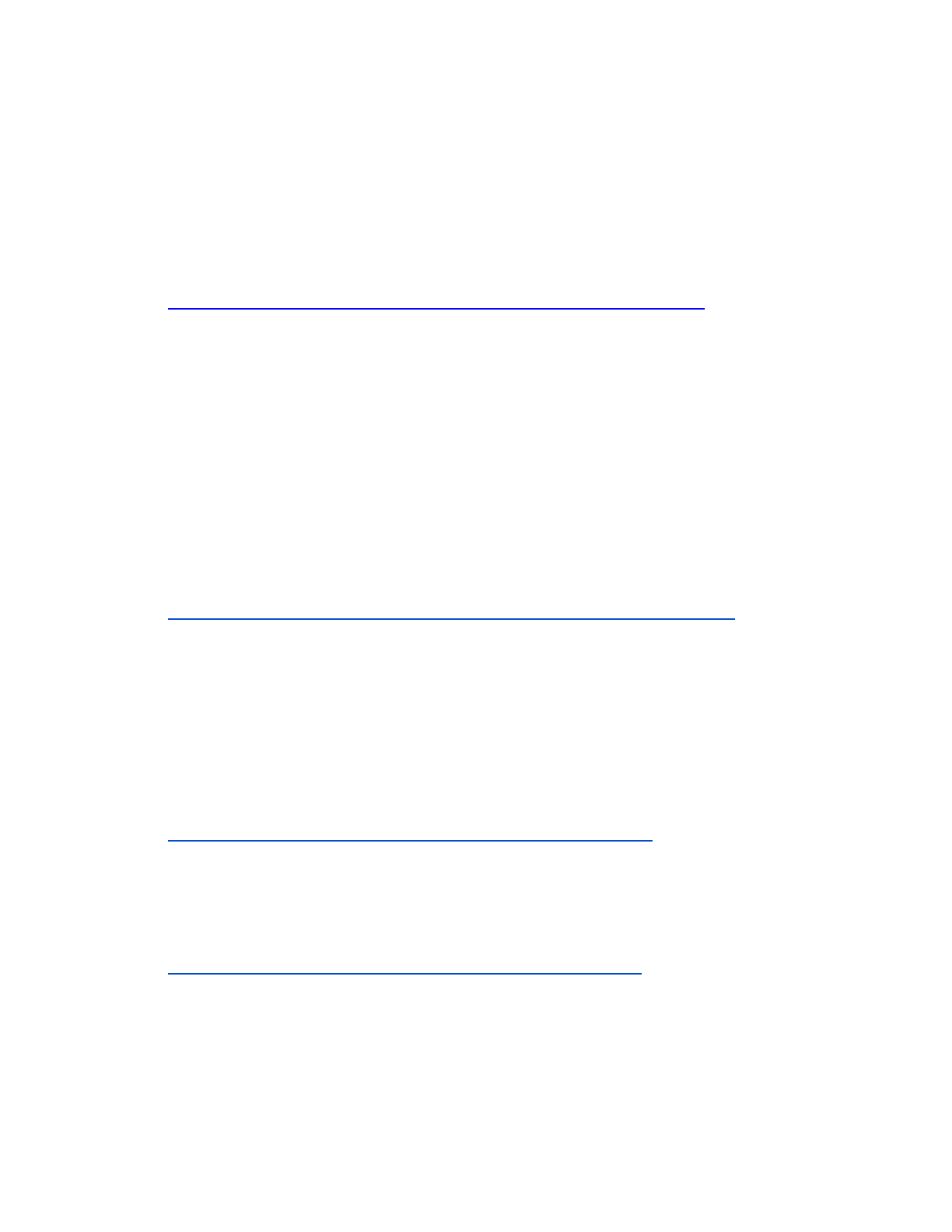
Nelson, E., & Bishop, P. (2013). Students as action research partners: A New Zealand example.
Middle School Journal
, 45(2), 19-26. doi:10.1080/00940771.2013.11461883.
Nielsen, K. (2014). Self-assessment methods in writing instruction: a conceptual framework,
successful practices and essential strategies. Journal of Research in Reading
, 37
(1), 1–16.
https://doi-org.ezproxy.hamline.edu/10.1111/j.1467-9817.2012.01533.x
Pardjono, P. (2002). Active learning: The Dewey, Piaget, Vygotsky, and Constructivist theory
perspectives. Jurnal Ilmu Pendidikan, 9(3), Jurnal Ilmu Pendidikan
, 01 February 2016,
Vol.9(3), p. 162-178.
Pollak, J., & Freda, P. (1997). Humor, learning, and socialization in middle level classrooms.
Clearing House,
Mar-Apr 1997 Vol.70 (4), p. 176-78.
Purdue Online Writing Lab (n.d.). Stages of the writing process
. Retrieved from
https://owl.purdue.edu/owl/general_writing/the_writing_process/index.html
Tomlinson, C.A., & McTighe, J. (2006). Integrating differentiated instruction and understanding
by design
.
Underwood, T. (1998). Teaching writing with reflective questions and reflective events. The
Clearing House,
72
(1), 18-23. Retrieved from
http://www.jstor.org.ezproxy.hamline.edu:2048/stable/30189413
Watts, M., & Lawson, M. (2009). Using a meta-analysis activity to make critical reflection
explicit in teacher education. Teaching & Teacher Education
, 25
(5), 609–616.
https://doi-org.ezproxy.hamline.edu/10.1016/j.tate.2008.11.019.
Wiggins, G. & McTighe, J. (2011). The understanding by design guide to creating high
quality units
. Alexandria, VA: Association for Supervision and Curriculum

Development.
Wiggins, G. and J. McTighe. (1998). Understanding by Design
, Association for
Supervision and Curriculum Development, ISBN # 0-87120-313-8 (pbk)
Yangin Eksi, G. (2012). Peer review versus teacher feedback in process writing: How effective?
International Journal of Applied Educational Studies
, 13(1), 33+. Retrieved from
http://link.galegroup.com.ezproxy.hamline.edu:2048/apps/doc/A297715820/PROF?u=cli
c_hamline&sid=PROF&xid=98ad375b.

Appendix A
Emoji Survey
Name:________________________ Hour:______
After this step in the writing process, how do you feel about your writing?
Give a one
word or short
phrase
justification:
How would you like more support to move forward during the writing process?
Please write any comments, questions, or suggestions on the back of this survey.
(Murdoch, 2005)
Emoji Survey
Name:________________________ Hour:______
After this step in the writing process, how do you feel about your writing?
Give a one
word or short
phrase
justification:
How would you like more support to move forward during the writing process?
Please write any comments, questions, or suggestions on the back of this survey.
(Murdoch, 2005)

Appendix B
Post Summative Self Reflection
Step One: Open TurnItIn. View the rubric and feedback comments connected to your
assignment.
Step Two: Write all of the feedback comments in your own words.
Step Three: Answer the following questions:
What do you see as the special strengths of this paper?
What do you notice when you look back at your earlier work?
What goals do you have for your next piece of writing?
(Liu, 2014, p. 1), (Underwood, 1998, p. 18)
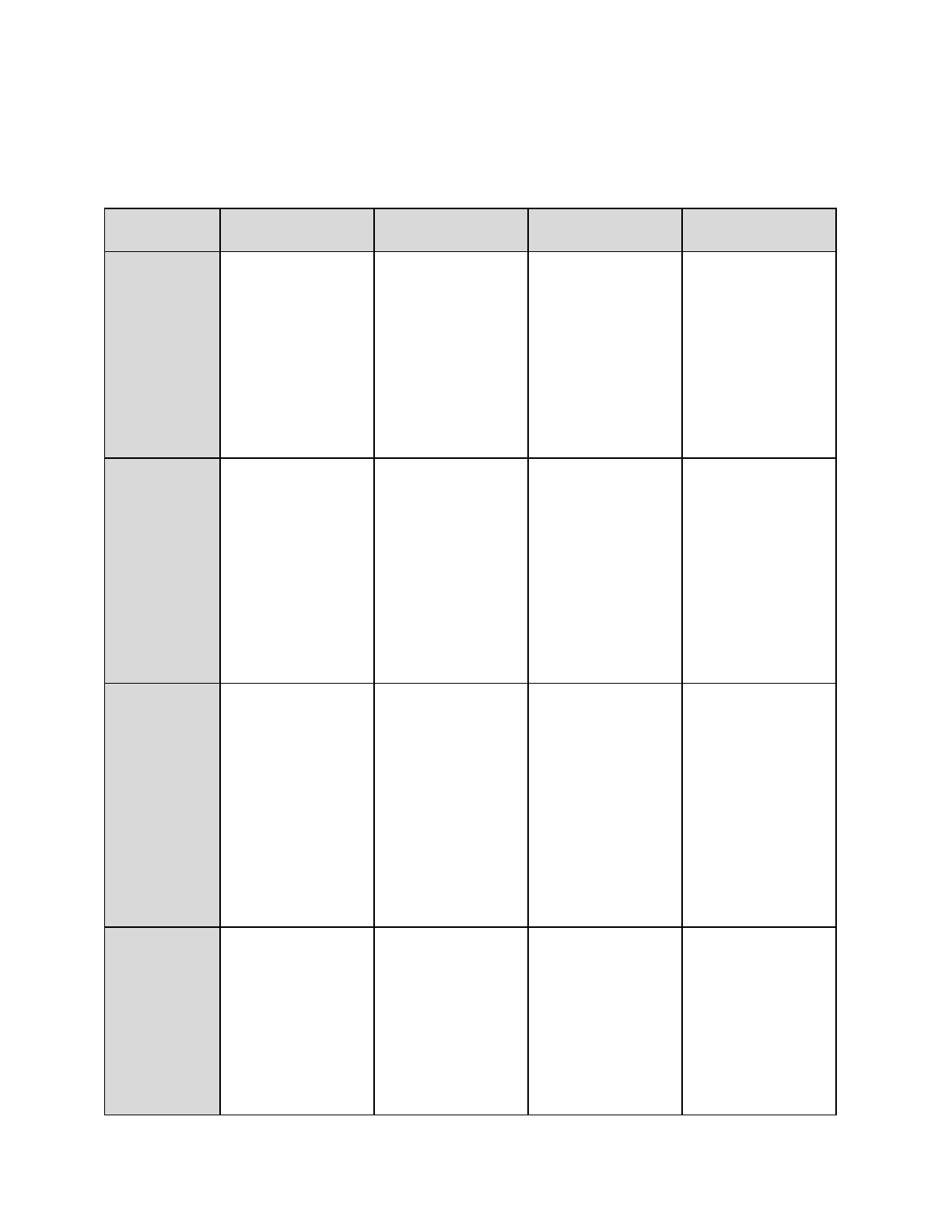
Appendix C
Semester One Essay Rubric – Grade 10
Schoology %
Exceeds Mastery
Proficient
Emerging/
Developing
Below
Expectations
Content
40%
Analysis is insightful
and demonstrates
depth of thought in
relation to
thesis/claims
Uses ample and
strategic evidence to
defend argument
Analysis
demonstrates
thinking beyond the
literal text; clear
connection to
thesis/claims
Uses strategic
evidence to defend
argument
Analysis address the
literal text and has
some inconsistencies
in connection to
thesis/claims
Uses some evidence
to defend argument –
some seem
inconsistent
Analysis is repetitive
or superficial in
nature or does not
clearly support
thesis/claims
Uses little or no
evidence; does not
clearly defend
argument
Organization
35%
Develops effective
and creative lead and
links to conclusion
Crafts effective body
paragraphs (topic,
summary sentences,
varied transitions –
all enhance meaning)
Develops effective
lead and has sense of
closure
Crafts successful
body paragraphs
(topic, summary
sentences, transitions
– all connect to main
idea)
Attempts a lead and
conclusion; may be
repetitive or need
development
Body paragraphs
have all elements
with a few
inconsistencies or
elements may be
repetitive
Essay structure is
weak, lacking in
organization and
connection to the
thesis
Style and
Language
15%
Uses precise
language and
maintains a tone
appropriate to
purpose, task, and
audience
Academic voice used
throughout
Blends quotations
seamlessly
Uses clear vocabulary
and tone may be a bit
uneven in reference
to purpose, task, and
audience
Academic voice used
throughout
Blends quotations
with minor errors
Uses somewhat
generic language
and/or sentences are
repetitive or unclear
Inconsistent use of
academic voice
Attempts blending
with several errors
Essay doesn’t reflect
purposeful word
choice; does not
reflect purpose, task,
and audience
Quotations are not
blended
Mechanics
(grammar,
spelling,
punctuation)
10%
Very few
grammatical,
spelling, or
punctuation errors
Consistent use of
present tense verbs
Follows MLA format
Few grammatical,
spelling, or
punctuation errors
Consistent use of
present tense verbs
1-2 errors in MLA
format
Some grammatical,
spelling, or
punctuation errors
Inconsistent use of
present tense verbs
Some inconsistency
in MLA format
Too many errors and
misspelled words
Lack of attention to
details
Little or no attention
to MLA format

Appendix D
Understanding By Design Unit Template
Title of Unit
Persuasive Research Unit
Grade Level
10
Subject
English
Time Frame
3 Weeks
Developed By
Jessica Kramar, Pre-AP 10 English Collaborative Team
Stage 1 - Identify Desired Results
Broad Areas of Learning
How are the BAL incorporated into this unit?
Media Literacy
Students are learning how to evaluate the credibility of sources for a topic of
their choice. They will be required to use databases for their research and must
find one source that is not from the high school database (TEDTalk,
documentary, online news source, podcast, etc.)
Citizenship and community life
Topics that students can write about must be a current issue in the world. Their
work must include the background of the issue as well as current and proposed
solutions. Students are encouraged to choose an issue they are passionate about,
concluding their essay with a call to action: what can students like them do to
contribute to the solution?
Cross curricular Competencies
How will this unit promote the CCC?
Because students are choosing an issue, their topics should fall under one of the seven major
categories of global issues: gender, environment, animal rights, social justice, health and
wellness, technology, or global politics. Not only cna their topic be transferable to content
areas they are interested in, but they can transfer metacognitive strategies to any writing
assignment and understand feedback better.
Learning Outcomes
What relevant goals will this unit address?
(must come from curriculum; include the designations e.g. IN2.1)

Minnesota K-12 Academic Standards in English Language Arts
● 9.14.5.5: “Use a writing process to develop and strengthen writing as needed by
planning, drafting, revising, editing, rewriting, or trying a new approach, focusing on
addressing what is most significant for a specific purpose and audience, and
appropriate to the discipline”
● 9.7.1.1: Write arguments to support claims in an analysis of substantive topics or
texts, using valid reasoning and relevant and sufficient evidence.
a. Introduce precise claim(s), distinguish the claim(s) from alternate or
opposing claims, and create an organization that establishes clear
relationships among claim(s),counterclaims, reasons, and evidence.
b. Develop claim(s) and counterclaims fairly, supplying evidence for each
while pointing out the strengths and limitations of both in a manner that
anticipates the audience’s knowledge level and concerns.
c. Use words, phrases, and clauses to link the major sections of the text,
create cohesion, and clarify the relationships between claim(s) and
reasons, between reasons and evidence, and between claim(s) and
counterclaims.
d. Establish and maintain a formal style and objective tone while attending to
the norms and conventions of the discipline in which they are writing.
e. Provide a concluding statement or section that follows from and supports
the argument presented.
● 9.7.7.7: Conduct short as well as more sustained research projects to answer a
question (including a self-generated question) or solve a problem; narrow or broaden
the inquiry when appropriate; synthesize multiple sources on the subject,
demonstrating understanding of the subject under investigation.
● 9.7.8.8: Gather relevant information from multiple authoritative print and digital
sources, using advanced searches effectively; assess the usefulness of each source in
answering the research question; integrate information into the text selectively to
maintain the flow of ideas, avoiding plagiarism and following a standard format for
citation.
● 9.9.7.7: Understand, analyze, evaluate, and use different types of print, digital, and
multimodal media.
a. Evaluate the content and effect of persuasive techniques used in
different mass media.
b. Synthesize information and recognize categories, trends, and
themes across multiple sources.
c. Demonstrate an understanding of ethics in mass communication
and describe the characteristics of ethical and unethical behavior.
d. Recognize ethical standards and safe practices in social and
personal media communications, and understand the
consequences of personal choices.
● 9.11.3.3: Apply knowledge of language to understand how language functions in
different contexts, to make effective choices for meaning or style, and to comprehend
more fully when reading or listening.
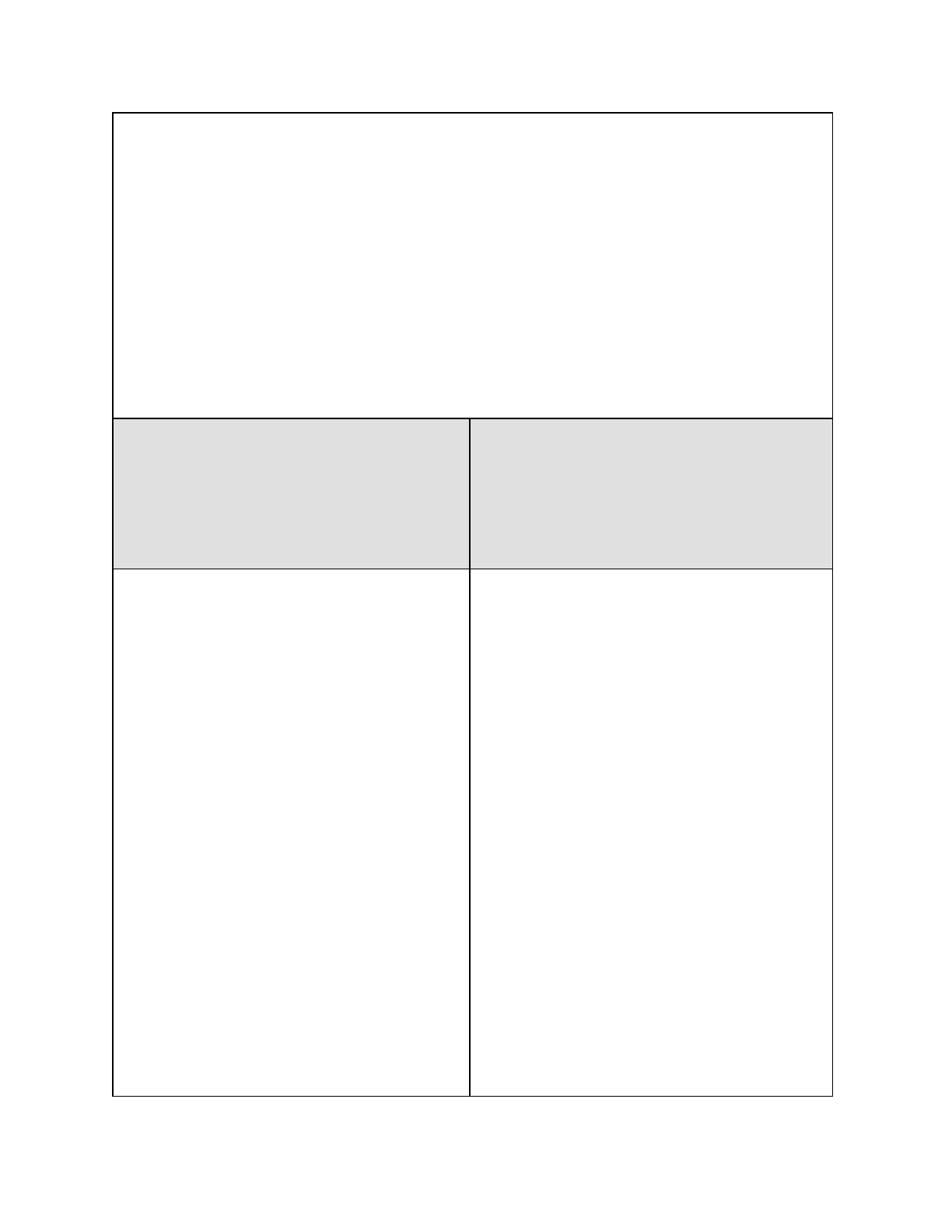
a. Write and edit work so that it conforms to the guidelines in a style manual
(e.g., MLA Handbook, Turabian’s Manual for Writers) appropriate for the
discipline and writing type.
Earned Honors Standards
● Best Evidence / Length of Evidence: Students find the most appropriate evidence
which is precise yet concise and can articulately explain how and why this evidence
effectively supports their argument.
● Rhetoric: Students critically analyze and/or use (depending on task) rhetorical
devices and strategies to articulate a refined argument that includes the development
and evaluation of effective claims and counterclaims, as well as takes into
consideration the most effective strategies to persuade their audience
Enduring Understandings
What understandings about the big ideas are
desired? (what you want students to
understand & be able to use several years
from now)
What misunderstandings are predictable?
Essential Questions
What provocative questions will foster
inquiry into the content? (open-ended
questions that stimulate thought and inquiry
linked to the content of the enduring
understanding)
Students will understand that...
Research is hard! Just A FEW reasons why
research is difficult:
● Biased or false information (“fake
news”)
● Difficult reading levels/
content-specific vocabulary
● On-going: How much is enough?
● Takes time! Lots of reading
Research is important:
● Learn how to evaluate sources
● Form educated opinions
● Helps you make better decisions
Bigger project require more prep
● Stay organized from the beginning
● Follow every step in the writing
process
● Spend more time editing/revising
with others
Related misconceptions…
●
Not every source is credible- there is
a lot of bias
Content specific….
● How do I create an essential question
worthy of a research project?
● How do I know if a source is
reputable? How do I use MLA style to
write a research paper?
● How do I synthesize information from
various sources?
● How do I use effective reasoning
skills, including those of ethos, pathos,
logos, to defend the thesis and claims
of my paper?
● How can I use the writing process to
produce the best publication possible?
FNMI, multicultural, cross-curricular…
● What kind of advocacy or education
can I do to help my community
understand the importance of my
research question?
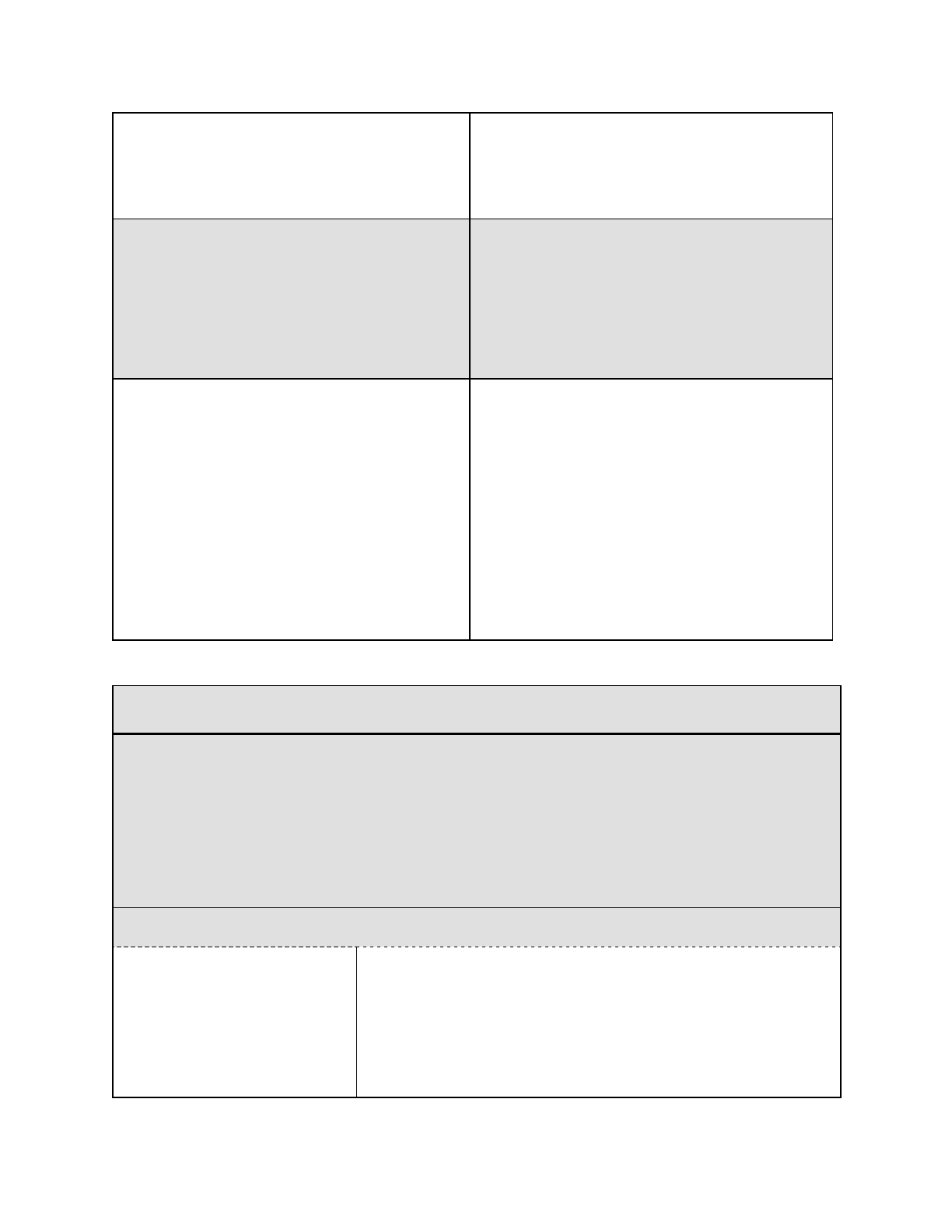
● Research does not end after you find
the minimum number of resources
required- it can happen at any point
during the writing process
Knowledge:
What knowledge will students acquire as a
result of this unit? This content knowledge
may come from the indicators, or might also
address pre-requisite knowledge that students
will need for this unit.
Skills
What skills will students acquire as a result of
this unit? List the skills and/or behaviours
that students will be able to exhibit as a result
of their work in this unit. These will come
from the indicators.
Students will know...
● the modes of persuasion
● how to evaluate credible and relevant
sources
● the stages of the writing process
Students will be able to…
● research a topic using a variety of
relevant and credible resources
● follow the writing process to produce
polished and effective writing
● write a persuasive argument about
their research topic
● present organized information and
evidence about their topic
● understand and apply feedback to
improve their writing
Stage 2 – Assessment Evidence
Performance Task
Through what authentic performance task will students demonstrate the desired
understandings, knowledge, and skills? (describes the learning activity in “story” form.
Typically, the P.T. describes a scenario or situation that requires students to apply knowledge
and skills to demonstrate their understanding in a real life situation. Describe your
performance task scenario below)
By what criteria will performances of understanding be judged?
GRASPS Elements of the Performance Task
G
– Goal
What should students
accomplish by completing this
task?
Students should be producing a clear, coherent, and well
supported argument about a current issue somewhere in the
world. Their argument should be developed using strong
rhetoric (including persuasive appeals and
claims/counterclaims) and credible research.
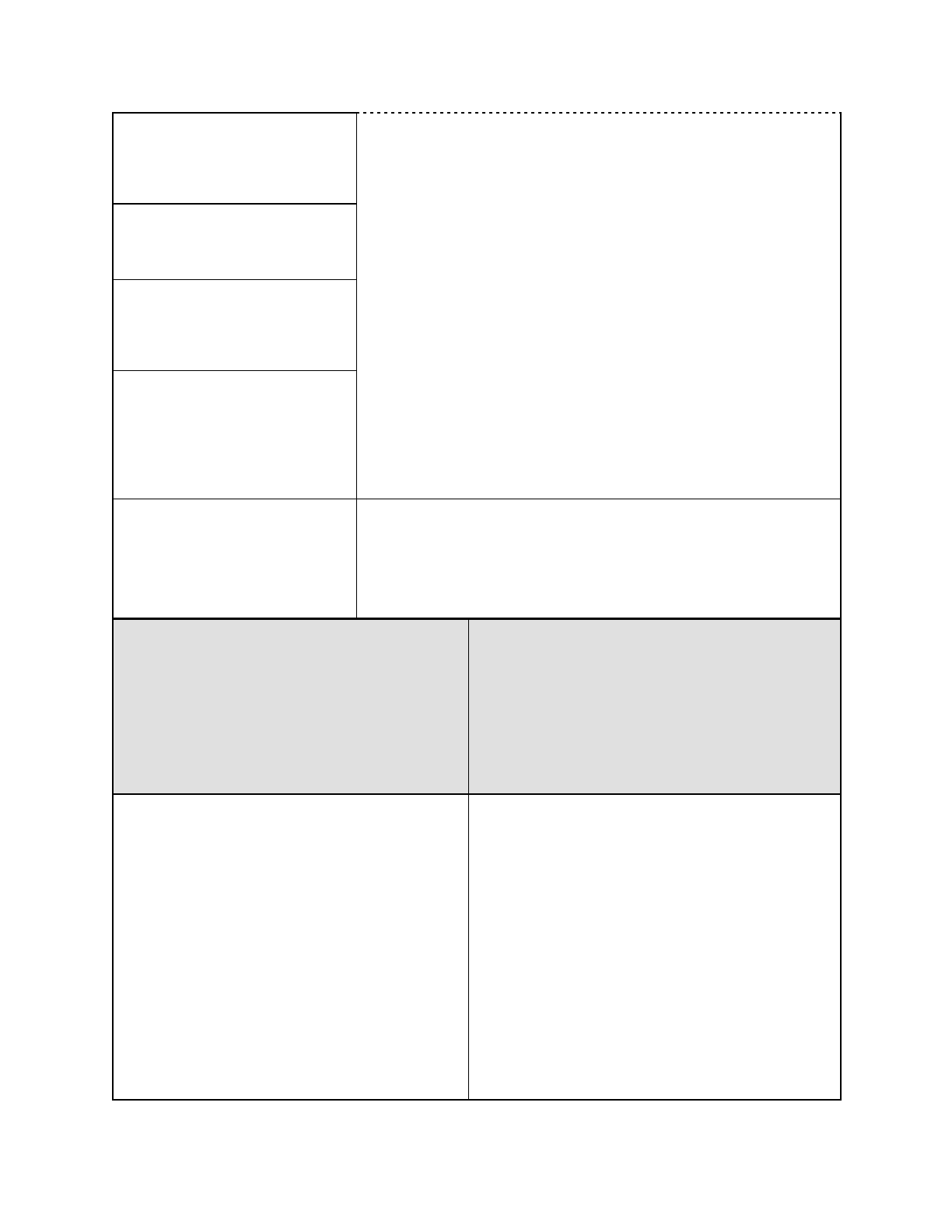
R
– Role
What role (perspective) will
your students be taking?
Students will be taking a largely independent role in this
unit.They should approach research from a neutral stance in
order to conduct unbiased research. After their thesis is
developed, they will take on an arguable perspective.
Student’s targeted audience should be an academic group of
their peers and older.
Students are challenged to conduct their own research about a
world issue and construct an argument that presents both the
issue and the solution.
Students must construct an argumentative essays that is 4-6
pages in length that cites 6-10 sources. The essay should be
formatted following MLA guidelines.
A
– Audience
Who is the relevant audience?
S
– Situation
The context or challenge
provided to the student.
P
– Product, Performance
What
product/performance will
the student
create?
S
– Standards & Criteria
for Success
Create the rubric for the
Performance Task
(Appendix C)
Other Evidence
Through what other evidence (work samples,
observations, quizzes, tests, journals or other
means) will students demonstrate
achievement of the desired results?
Formative and summative assessments used
throughout the unit to arrive at the outcomes.
Student Self-Assessment
How will students reflect upon or self-assess
their learning?
Informal:
● Verbal teacher conferences
● Stoplight feedback of research
questions (green means go, yellow
has feedback to make it green, and
red means start over)
Formative:
● Ethos, pathos, and logos practice
● Submit research question for
feedback
● Submit initial research to prove topic
can be found on databases
● Post unit reflection of past writing
assignments
● Bring draft to class for peer writing
coach’s feedback and peer group
discussion of written teacher feedback
● Complete assignment description
checklist as the unit progresses
● Emoji survey

● Submit 6 resources for feedback,
proof of relevant evidence
● Complete outline to organize
evidence and create claims
● Submit a practice paragraph for
teacher feedback
Summative:
● 4-6 page research essay
Stage 3 – Learning Plan
What teaching and learning experiences will you use to:
● achieve the desired results identified in Stage 1?
● equip students to complete the assessment tasks identified in Stage 2?
Where are your students headed? Where have they been? How will you make sure the
students know where they are going?
What experiences do the learners bring to the unit? How have the interests of the
learners been ascertained? Have the learners been part of the pre-planning in any way?
What individual needs do you anticipate will need to be addressed?
Learning environment: Where can this learning best occur? How can the physical
environment be arranged to enhance learning?
10th grade students have done research in 8th and 9th grade before, but they did not
have to incorporate an element of persuasion in their final product. They may be familiar with
the modes of persuasion when it comes to the credibility of sources, but they have not had to
apply it to their own writing.
Each step in the writing process is a formative assignment. This will allow me to check
in with students who are falling behind or not meeting standards. Students who are not
understanding standards at proficiency will be assigned to Flex Block, the time we allow for
intervention. I will also invite students to office hours for assistance.
Students are choosing their own topics. This incorporates both student choice and
student voice to make more autonomous learners. Because they may be writing about
controversial or emotionally loaded topics, they are encouraged to be respectful of differing
viewpoints.
How will you engage students at the beginning of the unit? (motivational set)
● Start with emotional argument about a personal friend who was killed by a drunk
driver
● Show them a video made by past students who explained the project
● Provide them with choice of topic

What events will help students experience and explore the enduring understandings and
essential questions in the unit? How will you equip them with needed skills and
knowledge?
#
Lesson Title
Lesson Activities
Resources
1
Past Writing
Reflection
● Students will look at the feedback from
their last writing summative
● Complete reflection
● Teacher
feedback
posted in
Turnitin
● Appendix B
reflection
form
2
Ethos,
Pathos,
Logos
● Introduce Unit
● Define ethos, pathos, logos
● Model writing using persuasive appeals
● Student practice: identifies
ethos/pathos/logos, explains why they think
it is each of those devices (reflective)
● Have research question approved
● Student
made video
(no parent
permission
to share)
● Daily
slideshow
● Student
practice
3
Databases
and Initial
Research
● Introduce databases
● Explain credibility of academic journals
● Begin initial research to guarantee
credibility of topic and its sources
● Homework: Submit two research questions
with two academic journals- evaluate
whether students would use that source and
why
● Daily
slideshow
● Initial
Research
Assignment
4
Summative
Assignment
description
and Relevant
Sources
● Give students assignment description
● Provide note taking guide
● Walk through an example of how I would
take notes about a credible sources,
includes modeling hwo how to evaluate the
source and choosing strong evidence
● Daily
slideshow
● Note taking
guide with
example
● Assignment
Description:
Appendix D
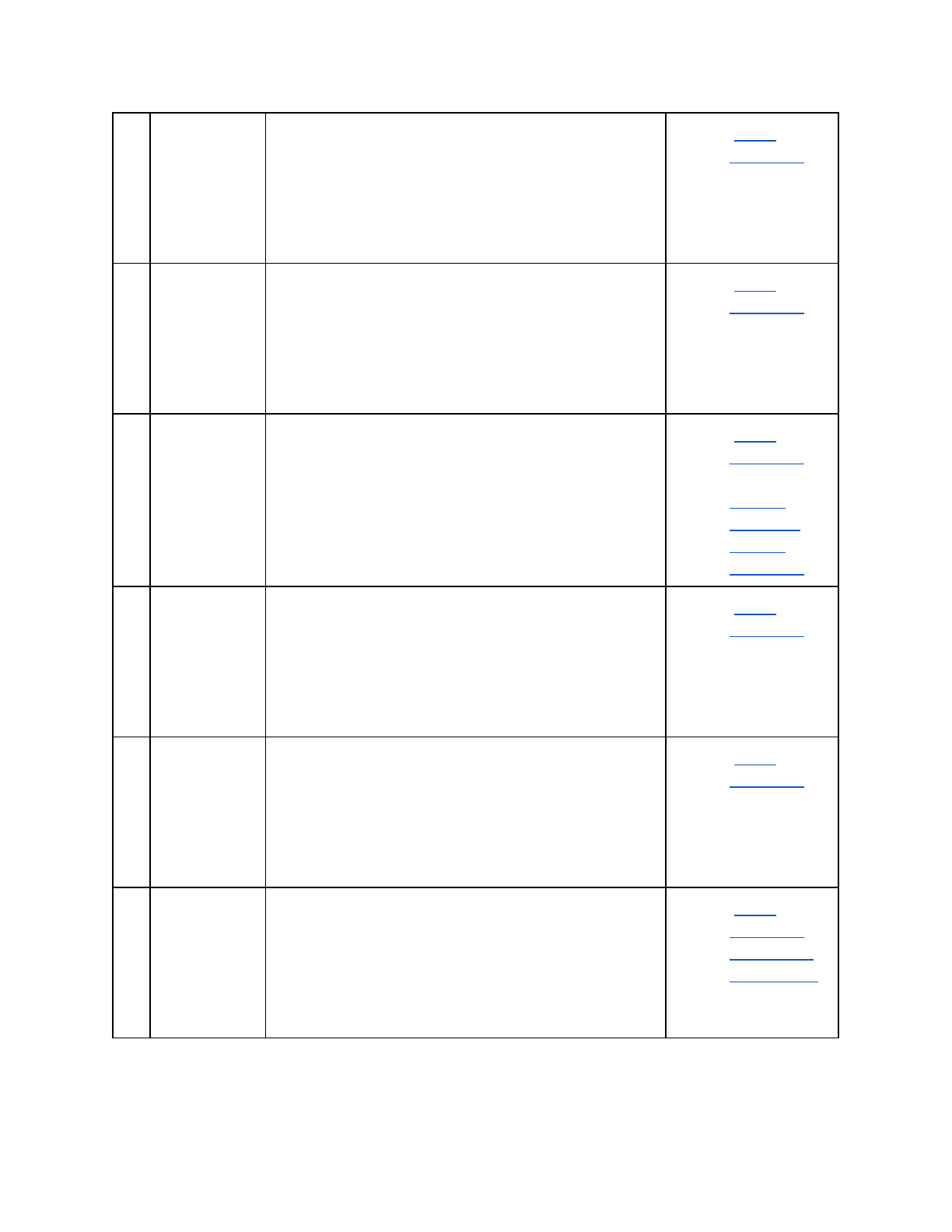
5
Credible
Sources
● How do you know a non-database source
is credible?
● Introduce NewsGuard- journalistic
resource that evaluates and justifies the
credibility of sources reviewed by humans
● Allow for research time
● Daily
slideshow
6
Earned
Honors and
Research
Time
● Emoji survey #1- reflective check in
● Introduce Earned Honors Skill #3- Rhetoric
(includes counterarguments)
● Whole class practice identifying strongest
counterargument
● Research time- find the rest of their sources
● Daily
slideshow
● Emoji
Survey-
Appendix B
7
Outlines
● Earned Honors practice- NoRedInk (claims
and counterclaims unit diagnostic)
● What is outlining?
● What is its purpose?
● Provide multiple options for student
pathways (choice)
● Use the rest of time to start their outline
● Daily
slideshow
● NoRedInk
● Outline
option #1
● Outline
Option #2
8
Drafting
● Basic structure of a paragraph in a
persuasive research essay
● How to turn an outline into a paragraph
with example
● Homework: Write at least one body
paragraph
● Daily
slideshow
9
Academic
Phrases and
Transitions
● Emoji Survey #2- reflective check in
● Instruct how to use sentences stems to add
fluency in student’s essay (within
paragraphs and between paragraphs)
● Homework: Submit body paragraph for
teacher feedback
● Daily
slideshow
● Emoji
Survey-
Appendix B
10
MLA
Review
● Work on MLA Style Assignment with
peer, should all be review from previous
years
● Use rest of class to continue drafting essay
● Homework: Choose a section of the rubric
students wants to focus on improving
● Daily
slideshow
● MLA Style
Assignment
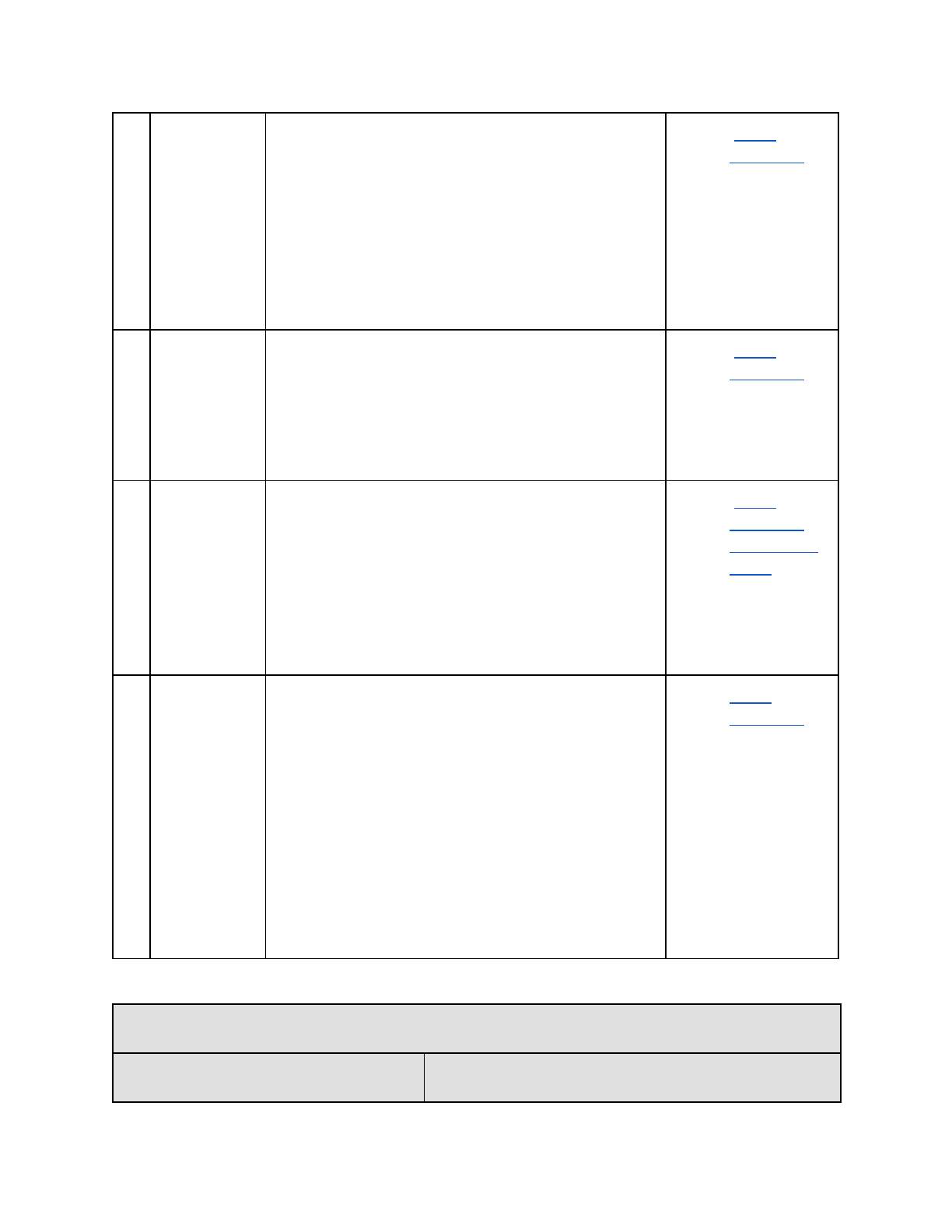
11
Revise and
Edit
● Writing Coaches are present in class
today- students must conference with
coaches or teacher by end of the hour about
their chosen rubric criteria (content,
organization, style, or mechanics)
● When students are not conferencing, they
are reviewing and applying teacher
feedback from their practice body
paragraph
● Daily
slideshow
12
Intros and
Conclusions
● Instruct the parts of an introduction (hook,
identify issue, thesis)
● Instruct elements of a conclusion (restate
argument, call to action/echo)
● Homework: Bring printed draft of essay to
class for peer review
● Daily
slideshow
13
Peer
Review
● Exchange essays with a peer
● Complete a checklist, annotate unclear
information, provide one compliment
● Complete full assignment checklist for self
reflection
● Persuasion Practice- possible
● Homework: Submit final essay for
summative assessment
● Daily
slideshow
● Peer review
guide
14
Unit
Reflection
(Intro next
unit)
● Emoji Survey #3- reflective activity
● Peer discussion:
○ With your group, discuss the
following:
○ What surprised you the most about
this unit?
○ What was the most challenging?
The most enjoyable?
○ What was the most helpful step
during the writing process?
○ How has your writing changed
because of this unit?
● Daily
slideshow
● Emoji
Survey-
Appendix B
Assess and Reflect (Stage 4)
Considerations
Comments
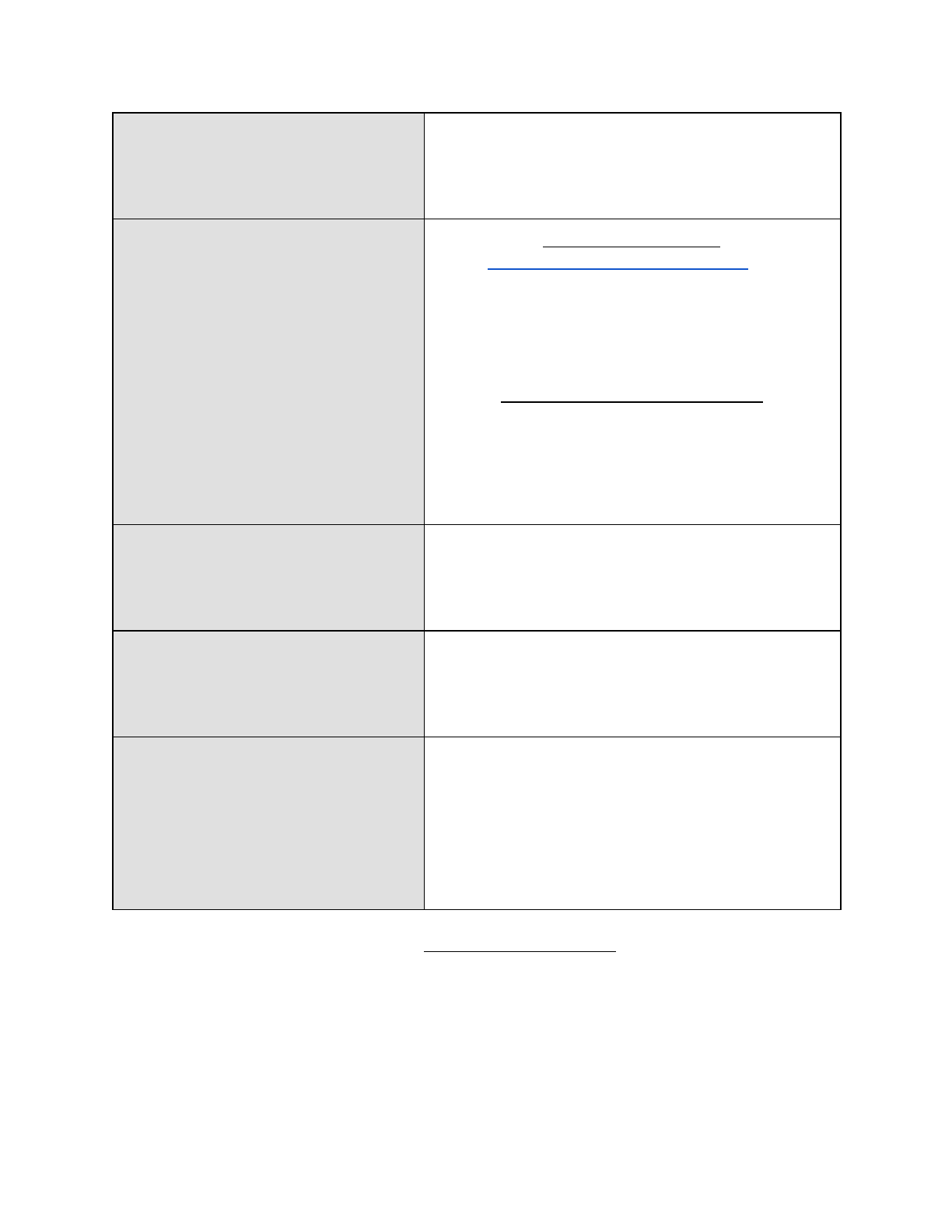
Required Areas of Study:
Is there alignment between
outcomes, performance assessment
and learning experiences?
Yes- both grade level and above grade level
standards are addressed and supported
Adaptive Dimension:
Have I made purposeful adjustments
to the curriculum content (not
outcomes), instructional practices,
and/or the learning environment to
meet the learning needs and
diversities of all my students?
For struggling students:
● Modified Research Unit slideshow (created
with special education teachers)
○ Focuses on most essential skills to
meet requirements outlined by IEP’s
and 504’s
For students who need a challenge:
● Earned Honors: can attempt above
grade-level skills in order to attempt to
change transcript from “Pre-AP English 10”
to “Honors Pre-AP English 10”
Instructional Approaches:
Do I use a variety of teacher directed
and student centered instructional
approaches?
Yes- CLRT strategies, project-based learning
Resource Based Learning:
Do the students have access to
various resources on an ongoing
basis?
Yes- databases, sources outside of databases, the
media center, the Writing Center
FNM/ I Content and Perspectives/
Gender Equity/ Multicultural
Education:
Have I nurtured and promoted
diversity while honoring each child’s
identity?
Yes- Allows a wide range of topic choices as well as
assistance in approaching each topic respectfully,
especially during peer discussion
Wiggins, Grant and J. McTighe. (1998). Understanding by Design
, Association for Supervision
and Curriculum Development, ISBN # 0-87120-313-8 (pbk)

Appendix E
The Persuasive Research Paper - 50 Summative Points
Paper due at the beginning of class Monday, November 4th.
1. DESIGN: Identify a research question that has a problem that needs to be solved.
2. RESEARCH: Find a variety of sources, especially in the school databases.
3. WRITE: Write a 4-6 page problem/solution persuasive research paper in MLA format.
GUIDING STEPS FOR 2019-2020 PERSUASIVE RESEARCH PROJECT:
Design
❏ I have decided on a problem that I care about that needs solving.
❏ I turned my problem into a clear, focused, and arguable research question.
Research
❏ My sources are credible and timely. They include relevant arguments and evidence.
❏ I have searched multiple online EHS databases for high-quality information about my topic.
❏ I have consulted multimedia resources (podcasts, documentary films, etc.) to supplement my
database sources (optional).
❏ I have gathered enough information that I can cite 6+ sources in my paper defending my
argument.
❏ I have gathered enough information that I can cite 2 sources in the concession section of my
paper (HONORS optional).
❏ I have taken clear and thorough notes to keep track of information, quotes, and citations.
❏ I have included in-text citations in my notes for all quotations and paraphrases.
Write
❏ I have organized and outlined the information from my sources.
❏ I have followed the format and structure of the sample outline.
❏ My research paper is 4-6+ pages long.
❏ My thesis statement establishes a clear position/argument.
❏ My claims are supported with evidence and followed by thorough reasoning (discussion).
❏ I have included evidence from 6+ sources in the paper itself.
❏ I use effective research strategies to gather strong evidence to support an argument.
❏ I maintain an academic voice throughout the essay with emphasis on persuasive appeals.
Formatting
❏ I have balanced direct quotations and paraphrased, prioritizing paraphrase. My originality
percentage on Turnitin.com is 20% or lower.
❏ My paper includes in-text MLA citations and a matching Works Cited page.

❏ I have followed proper MLA page format regarding margins, font, spacing, and headers.
❏ I have double-spaced evenly throughout the paper including a Works Cited page.
❏ My MLA Works Cited page entries are in alphabetical order with a hanging indent.
❏ My paper fully explains the origin of the problem I’m researching and current solutions
people are trying out.
❏ I have revised and edited my work to eliminate mechanical errors.
❏ I paced my time to meet the deadline.
Paper Outline
I. Introduction
a. Introduce the topic in an engaging manner.
c. Thesis sets up both the problem and the solutions.
II. Background information and evidence of the problem
a. Define the problem and explain its origins.
b. Show concrete evidence of the problem.
c. Counter evidence and concession (HONORS optional)
a. Refute popular belief (introduce opposing arguments) and suggest alternate
viewpoint(s)
III. Current & proposed solutions
a. Explain what is currently being done to solve the problem and evaluate how
well those solutions are working.
b. Explain potential solutions to the problem that have not been tried.
IV. Conclusion
a. Briefly restate the main ideas from the paper.
b. End with the significance of this topic and provide a call to action.
V. List of Works cited in MLA format starts on a new page.
**VERY IMPORTANT NOTE**
● All claims supported with evidence (direct quotes and/or paraphrases).
● All direct or paraphrased evidence includes citations in MLA format.
● All claims and evidence are explained with reasoning and persuasive appeals.

